#2009 Super Sonic Songs
Explore tagged Tumblr posts
Text

for @autocat5876
19 notes
·
View notes
Text
Green Day interview - UNO! DOS! TRE! [ROCKIN'ON (September 2012)]


The fastest interview just before Summer Sonic! The band talks about their new album trilogy in its entirety!
UNO! DOS! TRE! GREEN DAY
Interview by AKEMI NAKAMURA Photographs by YURI HASEGAWA

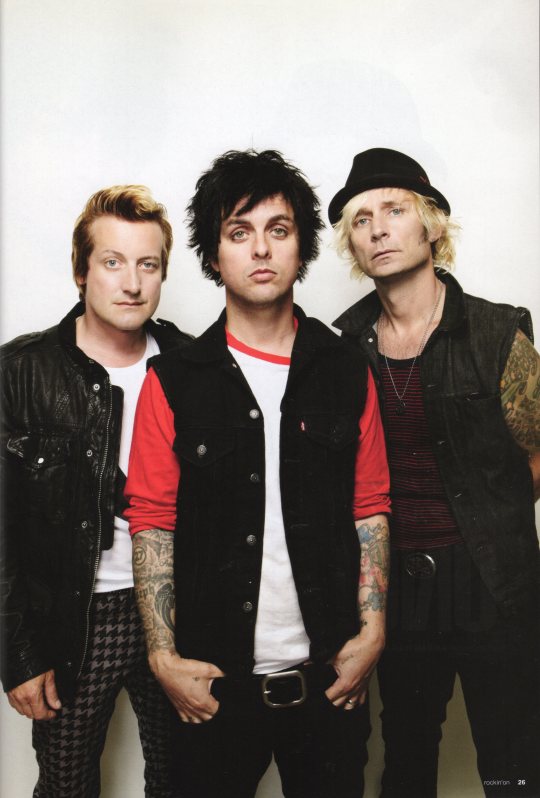
"It's unmistakably a 100% “Green Day album” and we can now say we're in the prime of our lives because we're able to do that."
What the fuck is this! They've made not one, but three incredible albums, bursting with outrageous energy that make you want to scream. Green Day is extremely ambitious in releasing their ninth album as a trilogy called "Uno!", "Dos!", and "Tre!", one album every two months starting in September, an unprecedented and ambitious feat that no one will ever pull off again. The reason this masterpiece, which could be called Green Day's version of the "Rock Encyclopedia", was created in the first place is because of "American Idiot", which they completed in 2004 and which is considered the most important album of the first decade of the 21st century. An outright critique of the Bush administration in an America that had fallen silent in the wake of the 9/11 attacks, the all too righteous album was arguably the riskiest gamble in their career history, but the most politically charged album ever sold 15 million copies worldwide and was greeted with great acclaim. And they continued their momentum with 2009's 21st Century Breakdown, their second rock opera, which went to number one in 21 countries around the world. It is truly astonishing. Having pierced the zeitgeist so boldly and shared it with the masses around the world, Green Day did not grow weary here, but instead accumulated an unprecedented sense of achievement and positive energy. And the creative solution to releasing all that energy was this high-powered "party" trilogy. Feeling that they had done it all, the band came back to their 'roots' and tackled this work with a fresh start.
The good news for long-time fans is that the band themselves have revisited Green Day's early golden years, including "Dookie," and started production with the aim of "returning to their roots". However, after attempting to "return to their roots", they went further back in time, to their youth, and revisited the origins of rock music for themselves. The result is a work that is both autobiographical and a summary of Green Day's history, tracing the band's path from there to the present day. If we organise the three albums, "Uno!", which aims for arena rock like AC/DC and power pop like the early Beatles, is a work that depicts a longing for the youth, while "Dos!", which resonates with garage rock influenced by the Stooges, depicts the "sex, drugs, and rock and roll" of adolescence. And the third album, "Tre!", is an epic work that sums up the current Green Day, who have already released two historic rock operas. The trilogy of 37 songs and 130 minutes in total is so thoroughly high-tension that you can't help but wonder if this is a new album from a band that has been together for more than 20 years.
More importantly, their new Green Day Sound, which is more about jubilation, excitement and emotion than political messages, is needed here for American rock, or even America as a whole, which has become introspective in the decade since the terrorist attacks. In other words, the band, who became America's heroes in the post-terrorist conflict, have once again made a new chapter for America here, and once again have created a work that will lead America to a new chapter and break out of its shell, at an excellent time. Green Day is always right!
With Summer Sonic coming up soon, there is no doubt that they will come in with the super high tension of having created a triumphant return to their roots, so it is essential to head to the venue with high enthusiasm and high expectations! -Akemi Nakamura
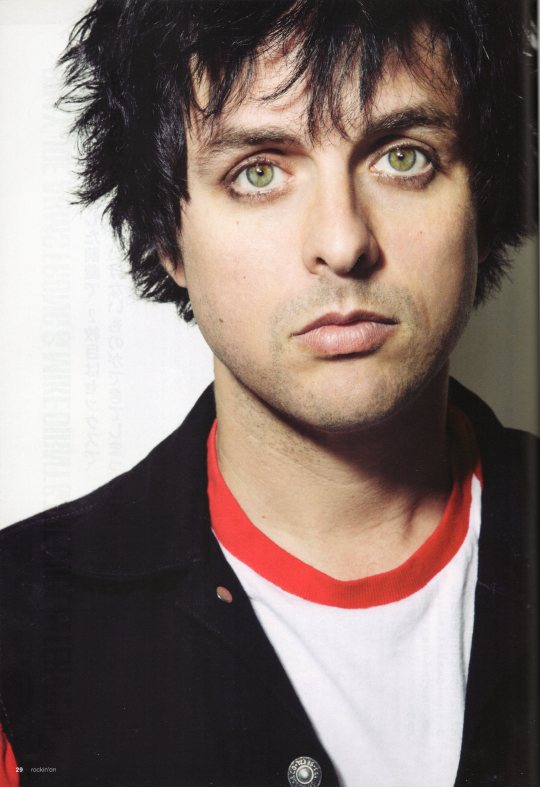


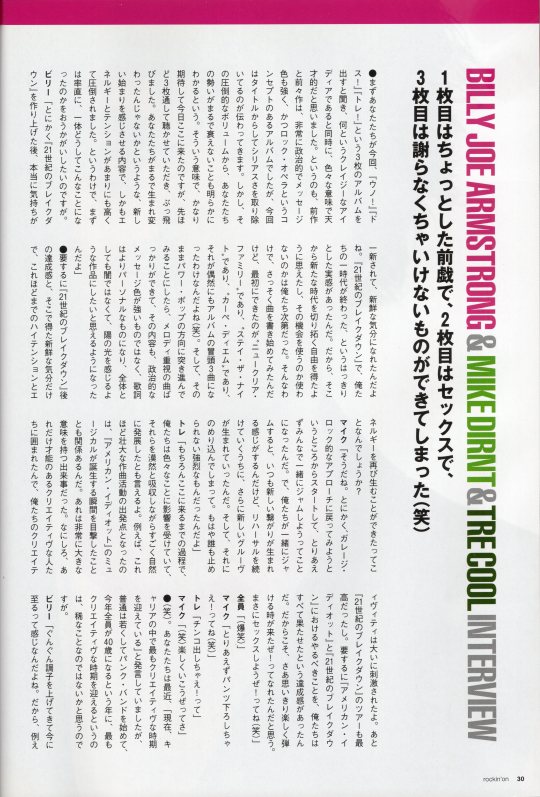
BILLY* JOE ARMSTRONG & MIKE DIRNT & TRE COOL INTERVIEW
"The first one is a little foreplay, the second one is sex, and the third one is something we have to apologise for (laughs)."
First of all, when I heard that you were going to release three albums this time, "Uno!", "Dos!", and "Tres!", I thought it was a crazy idea, but also genius in many ways. The previous two albums were very political, had strong messages, and had a rock opera concept, but this time, even the title tells us that you've removed the seriousness. However, the sheer volume of the album also clearly shows that you guys have not lost any momentum. In that sense, I came here today with quite high expectations, and I just listened to all three albums and was blown away. It's like you've been reborn, and the content makes me feel like you're starting something new, and the energy and tension was so high that I was overwhelmed. So, first of all, I'd like to ask you frankly how on earth this came about. Billie: 「Anyway, after making “21st Century Breakdown”, I really felt renewed and refreshed. With “21st Century Breakdown”, I had the distinct feeling that one era of us had ended. So it seemed like we had the freedom to carve out a new era from there, and it was up to us to use that opportunity or not. So we started writing songs straight away, and the first ones we wrote were “Nuclear Family”, “Stay the Night”, and “Carpe Diem”, which happened to be the first three songs on the album (laughs). Then we decided to go in the direction of power pop, and we ended up with a lot of melody-driven songs, with lyrics that were more personal and not so much political in their message, and the album as a whole became a work that was not dark, but had a sunny feel to it.」
In short, is it just the sense of achievement after "21st Century Breakdown" and the fresh feeling you got from it that allowed you to generate so much high tension and energy again? Mike: 「Yes, I suppose so. Anyway, we started off by trying to get back to a garage-rock approach, and we decided to just jam together. And whenever we jam together, it always feels like a new connection is formed, and as we kept rehearsing, a new groove was born. And then we got into it. It was so intense that no one could stop us.」 Tre: 「Of course we were influenced by a lot of things on the way here, and you could say that we developed very naturally while vaguely absorbing them. For example, the starting point for such an epic songwriting career had to do with witnessing the birth of the "American Idiot" musical. That was a very significant event. We were surrounded by so many talented and creative people that it really stimulated our creativity. Also, the "21st Century Breakdown" tour was great. Basically, we had a sense of accomplishment that we had accomplished everything we had to do with "American Idiot" and "21st Century Breakdown". That's why I think we were like, "Now it's time to have fun and play to our heart's content!" It was like, "Let's have sex!" (laughs)」 Everyone: 「(laughing)」 Mike: 「Let's just take our pants off! (laughs)」 Tre: 「Let's take our dicks out! (laughs)」 Mike: 「(laughs) Let's have some fun.」
(laughs). You recently stated that you guys are ‘currently in the most creative period of your career’, but I imagine it's pretty rare for people to start a punk band at a young age, and then to be in the most creative period of your career at a year when you are all turning 40 this year. Billie: 「It's like we've been getting better and better and now we're here. So, for example, I think it's the same with jazz musicians, but sometimes it's only when you get older that you really hit your stride. I think we've always developed slowly and naturally as a band while making albums, and we've always tried to do that. We've never tried to force ourselves to go in a direction that we thought was right in our heads, we've just tried to make something that comes from our truth. So sometimes we look back and realise how much we've changed with each album. So, because we've been building up our experience over the years, we had a huge pool of creativity when we made this album. So it's like we've got a lot of weapons in our arteries, we can rock really hard, we can write ballads, we can do garage rock, we can do power pop, and we could make all of that sound like "Green Day". That's how this album came about. Only we could have made this album, it's unmistakably a 100% "Green Day" album, and I think we can say that we're in the prime of our lives now that we're able to do that.」
So, when I listened to these three albums, it seemed to me that these were three complete albums as a whole, did you ever think of releasing all three at once? Mike: 「I thought it would be better to put them out one at a time separately. Because I thought that way everyone could really understand and digest each one. And it was made in such a way that the moment you finish listening to one album, you'll be excited and think, "I want to hear the next album!" So we set the time period between albums to be six weeks, so there wouldn't be too much time between albums. I also thought it was an exciting way to release something like this. On the other hand, if you suddenly gave me three songs at once, I'd be absolutely overwhelmed (laughs).」 Tre: 「So, you know, you can think of it like this. If we released it as a triple album, there would be one Green Day album this year, which means that the fun would end after just one release. Instead, we're going to have three new Green Day albums! Wouldn't that be great? Simply put, this year is all about Green Day. This year is all about Green Day. So get ready! Come along!」 Mike: 「So, (the first one) is a little foreplay, (the second one) we had sex, and then at the end is something we have to apologise for (laughs).」 Tre: 「So from now on, when people ask me what year it is, I have to say 'The year of Green Day!' We'll have a dragon face with three of our faces added to the Chinese zodiac (laughs).」
(laughs). These three albums seem like a movie depicting a certain coming-of-age story. The first one focuses on your early teens and youth, and is the starting point for rock listeners, the second one is about the struggles of becoming an adult, and the third one is a song about actually becoming an adult, or rather, it seems to have a development that summarises what you learned in each era. Did you intend to depict each album as you grew older? Or did you have a theme for each album? Billie: 「Yeah, the first one is definitely about youth, as you say, but the second one is about sex, sexual desire, and has a red-light district vibe, so it's more of a garage rock, party record. So the third one is definitely epic, but at the same time it's about self-reflection and self-projection.」
The second one, then, is a "sex, drugs & rock'n'roll" album, isn't it? Everyone: 「Yes!」
So, I'd like to ask you again about the lyrics of the first album: where on earth did lyrics like ‘I kissed your lips’, ‘I don't wanna say goodbye’ and ‘Will you be my girlfriend*’ come from? Where do they come from in terms of youthfulness, haste, eternity and a perspective on life from an early teenage point of view? Billie: 「Well, there's a point here where I kind of wrote the lyrics with my voice as an instrument to express something, and I didn't put too much emphasis on what I was actually saying there (laughs). So, for example, the song that says something like ‘Will you be my girlfriend’ is called "Angel Blue", and in that song…… Yeah, it's definitely like a look into my past, and I guess you could say that it's a footprint of my teenage years. It's like, "You're Angel Blue with teenage traces / Angel Blue with pretty faces". So, yes, I think you could say that the first album is a look back at my innocent days.」
Right. But why did you decide to look back at your youth now? Billie: 「Well, maybe I'm………… Hmmm well…… I wonder why?」 Mike: 「Because sometimes you just don't think about it.」
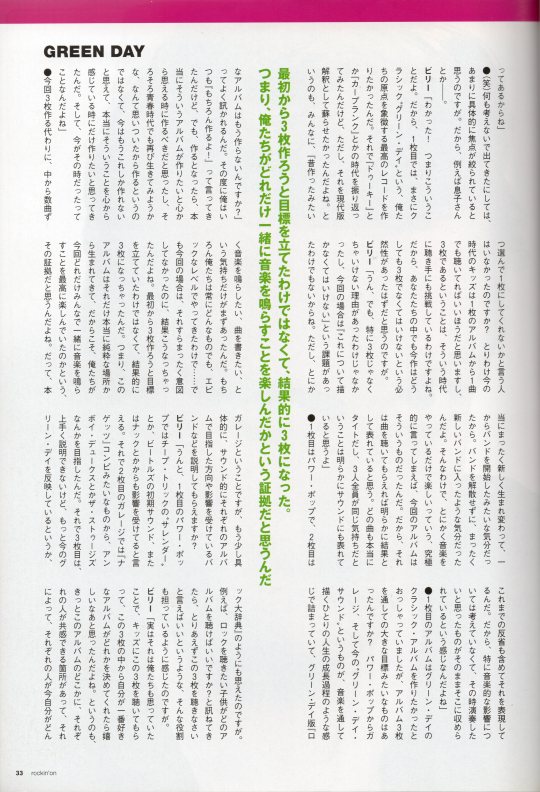
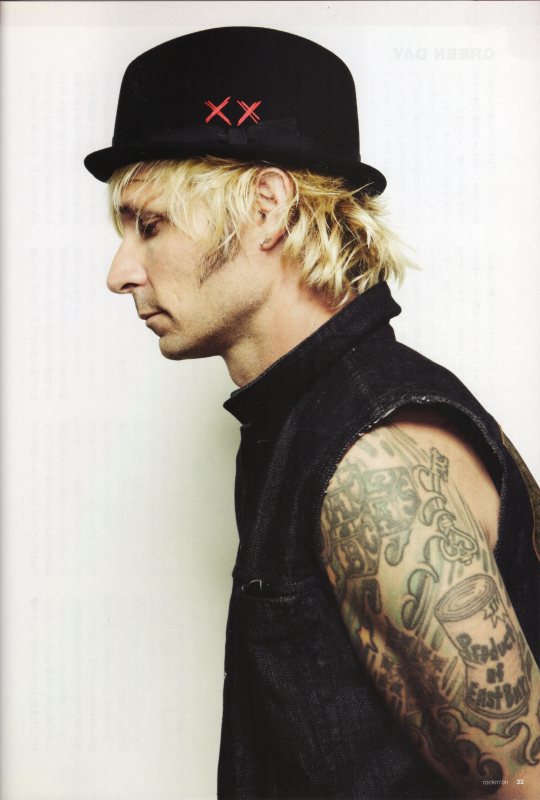
"We didn't set a goal to make three albums from the beginning, but it ended up being three. I mean, I think it's a testament to how much we enjoyed making music together."
(laughs) I think it's too specific and focused to have come out without thinking about it. So, for example, your son. Billie: 「Okay! So this is what I mean. So with the first one, we wanted to make a great record that really represents our origins, the classic "Green Day" record. So we looked back to the days of "Dookie" and "Kerplunk", but we wanted to bring it back as a modern interpretation. Because people often ask me, "Are you not going to make any more albums like the ones you made back then?" And every time I say, "Of course I will!", but if I were to make such an album, I should make it when I really want to make an album like that, not because I've had an idea that it's time to live my youth again, but only when I feel that this is the only way to make it now, when I really feel it in my heart. And now was the time.」
Instead of making three albums this time, did anyone ask you if you could pick a few songs from each and make them into one album? I think kids these days are happy listening to just one song from an album, and the fact that it's three albums means you're challenging your audience in these times. So I think there must have been a necessity amongst you guys that this album had to be three albums by all means. Billie: 「Yeah, but there wasn't a particular reason why it had to be three albums, and in this case, there was no assignment like, “I have to write about this”. However, first and foremost, we just wanted to make music and write songs. Of course, we've always done everything on an epic level…… But in this case, we didn't even intend to do that at all, and it just ended up like this. We didn't set a goal to make three albums from the beginning, but it ended up being three. I mean, the album came from such a really pure place, and I think it's a testament to how much we enjoyed making music together. Because it really felt like a whole new rebirth, like we were starting a band from scratch. It felt like we joined a whole new band without breaking up the band. So, ultimately, that's what this album is about, just playing music and having fun. So I think that's clearly reflected when you listen to the songs. Every song is really tight and it's clear that all three of us are on the same page.」
The first album is power pop and the second is garage. Can you be a bit more specific and describe the direction you were aiming for in terms of sound and the bands you were influenced by on each album? Billie: 「Well, for the first power pop album, I would say we were influenced by Cheap Trick's “Surrender”, the early sound of The Beatles, and even The Knack. And for the second garage album, I went from the “Nuggets” compilation to aiming for the Amboy Dukes and The Stooges. And for the third album, I can't really explain it, but it reflects more of what Green Day is now, or it expresses what we've learned from our past. So I don't really think about the musical influences, it's just what I wanted to play at the time.」
You said you wanted to make a classic Green Day album for the first album, but did you have any big goals for the three albums? From power pop to garage and the current "Green Day sound," it's like a depiction of the growth process of one person's life through music, and it felt like a Green Day version of the "Rock Encyclopedia." I felt like you were also playing a role in that, for example, if a child who wants to listen to rock music asks you which albums they should listen to, you could just tell them to listen to these three albums. Billie: 「Actually, that's what we thought too, and we thought it would be great if the kids could listen to these three albums and decide which one they liked best out of them. Because I'm sure there are parts of these albums that each of us can relate to, and I felt like they would reflect who we are as human beings. I thought that would be interesting. I wanted people to listen to all three albums, and of course I wanted them to like all three, but I also wanted them to decide which one they liked best. I mean, I thought that would be the audience's projection of themselves, and of course our projection of ourselves. It would be great if each person could collect their favourite songs and make a compilation album out of them.」
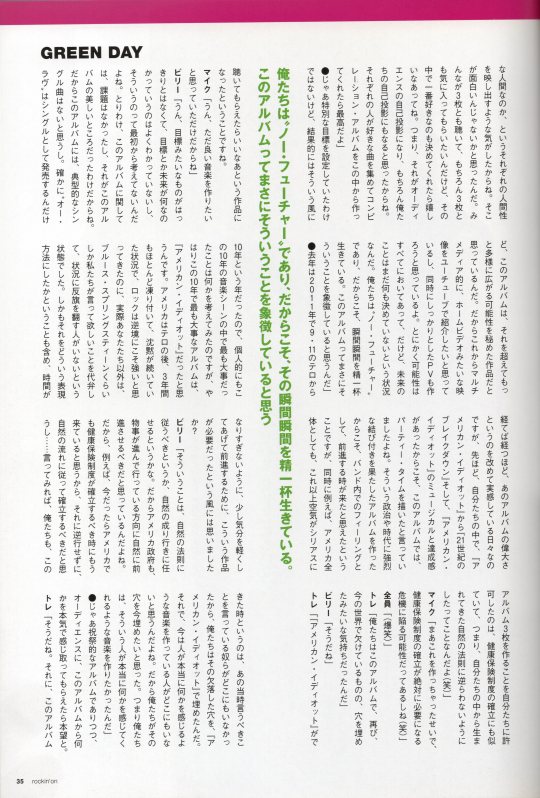

"We’re “No Future” and that's why we're living every moment to the fullest. I think that's exactly what this album represents."
So you didn't set any special goals, but the result is an album that you hope people will listen to in that way? Mike: 「Yeah, we just wanted to make good music.」 Billie: 「Yeah, we didn't have any clear goals, we didn't really know what our goals were or what the future was, and we didn't really think about those things from the beginning. Especially with this album, there was no agenda, and that's the beautiful thing about this album. So I don't think there are any typical singles on this album. It's true that "Oh Love" will be released as a single, but I think this album has the potential to go beyond that and expand in many different ways. So I'm thinking of doing a multi-media, home-video kind of video on YouTube, and I'm also thinking of making a solid music video. Anyway, the possibilities are all there, but we haven't decided anything about the future yet. We're "No Future" and that's why we're living every moment to the fullest. I think that's exactly what this album represents.」
Last year was 2011, the tenth anniversary of the 9/11 terrorist attacks, and I personally thought about what was the most important thing in the music scene of the last decade, and I still think the most important album of the last decade was "American Idiot". America was almost frozen in silence for three years after the terrorist attacks, and we had always thought that rock music was strong in the face of adversity, but in reality, other than you guys, Bruce Springsteen was the only one who could speak for what we wanted to say and turn the tables on the situation. And the more time passes, the more I realise the greatness of that album, including how it was expressed. Earlier, you said that you depicted party time in this album because of the sense of accomplishment you felt from "American Idiot" to "21st Century Breakdown" and the musical "American Idiot." Because you made an album that strongly connected to those politics and times, you felt that it was time to move forward as a feeling within the band, but at the same time, did you feel that this kind of work was necessary to lighten the mood a little and move forward, for example, for the whole of America, to not to take the atmosphere too seriously anymore? Billie: 「I would say that such things should follow the laws of nature, or let nature take its course. So I think the American government should let things move forward naturally in the direction that things are going. So, for example, if it were now, I think it's already time to establish a health insurance system in America, so I think we should follow the natural flow and establish it without going against it…….. In a way, we allowed ourselves to make these three albums, it's a bit like establishing a health insurance system, I mean, we didn't want to go against the laws of nature that came from within us (laughs).」 Mike: 「Well, because we've created this, there's even the possibility that we'll be in a crisis where we'll absolutely need to establish a health insurance system (laughs).」 Everyone: 「(laughing)」 Tre: 「We felt like with this album, once again, we've kind of filled a hole in what's missing in the world today.」 Billie: 「Yeah.」 Tre: 「When “American Idiot” was made, there were no people anywhere who were saying what needed to be said at the time, so we filled that missing hole with “American Idiot”. So I don't think there's anyone out there now making music that people really feel something. So we wanted to fill that hole now. I mean we wanted to make music that would make those people really feel something.」
So it's a festive album, but if the audience can really feel something from this album, you really want them to feel something from it. Tre: 「Yes, that's right. Besides, there's so much more to feel on this album.」 Mike: 「Really, seriously (laughs)」 Billie: 「Yeah, yeah. I think so…… Um, well…… I don't know…… But anyway, I mean, you know, seriously, because I think it's really, really crazy. I think it was a really crazy idea. So, quite frankly, I myself still can't believe the fact that we've actually completed something like this.」 Mike: 「(laughs)」 Billie: 「Because I think the idea of doing three albums could have easily gone wrong. But we actually did it. And no one had ever done it before, and I don't think anyone will ever do it again. And we've done it. Yeah.」


"In the world today, there is no one who is making music that people can really feel something. So we're trying to fill that hole with this album."
That's right. You said that it's something that people feel now. For example, I thought that "Kill the DJ" from "Uno!" was the best song that Green Day had ever made, but judging from the title alone, it seemed like it was a rebellion against the dance scene, which is now huge and empty, especially in America. Mike: 「I had been telling Billy for a long time that I wanted to write a song with a dance beat, with four beats. I wanted to see what would happen if Green Day did that. So, while we were working on the album, Billie actually came in with a song he'd written to try it out, played it and said, "Tell me what you think?" and Billie walked out of the room. And the moment the song started, I was like, "Oh man, are you serious?" (laughs).」 Tre: 「"Yeah!" (laughs)」 Mike: 「Then we took it from there and jammed on it as a band in a rock 'n' roll style and finished it. It's also about the noise that surrounds us, so "Kill the DJ" is a metaphor, I'm not actually saying I want to kill the DJ, but I might want to kill the VJ. For example, kill that guy from TMZ (news/gossip website)! (laughs).」 Tre: 「It's also funny that even though it's a dance song, he sings "Kill the DJ".」
We're running out of time, so I'd like you to tell me a little bit about a few songs, firstly about the single "Oh Love" and then the magnificent and epic "Forgotten" that closes the three albums. Can you tell us about them? Both of them touch on love, how did they come about? Billie: 「"Oh Love" was written as a spotlight ballad. I started with a guitar riff and it almost sounded like a cross between AC/DC and Queen, but a Green Day version of it. And then, umm, I wrote that song with the intention of just grabbing your heart and never letting go. It's almost like a love addiction. Well, I wrote that song with that in mind, and then the last song, "Forgotten," is kind of a song that kind of reflects and embodies everything you've heard on "Uno!", "Dos!", and "Tre!" It's the song that sums up the three albums, the real grand finale. It's also a torch song, so it's like a sentimental love song.」
What about "Amy" from "Dos!"? Billie: 「Amy Winehouse.」
Why did you want to sing about her? Billie: 「I was really sad that she passed away because I thought she was a really great artist and I thought the music scene lost a really big presence because of her death. She was someone who could sing modern versions of old soul music, and I think it's really hard to find someone like that these days.」
Finally, you are all 40 this year and show no signs of slowing down. In the almost 25 years since you formed the band, how far have you come, and where do you plan to go from here? Billie: 「Wow (laughs). Weeeeeell, let's see. We…… So we're all alive at the moment, you know. So as long as the three of us are alive, we'll keep making music. Other than that, I can't think of any other plans at all.」
Understood. Thank you very much! Everyone: 「Thank you!」
Translator's Note: A few things to note.
-Yes, that is a typo on Billie’s name and I’m keeping it there for posterity’s sake, no matter how much Google Docs is trying to correct me. And in case you’re wondering, this is the second time that I encountered this typo. It will not be unusual if I encounter it again in some other magazine.
-In the text of the interview, it really did say “Will you be my girlfriend? (僕の彼女になっ���くれないか)”, and Billie did confirm that it was from the song ‘Angel Blue’, but the line in the lyric was really written as “Won’t you be my bloody valentine?” So I assume that for some reason, the editor chose a far more polite wording and I chose to keep it that way.
Please do support me via my ko-fi! ☕
#Billie Joe Armstrong#Mike Dirnt#Tre Cool#Green Day#Trilogy era#my scan#translation#interview#ROCKIN'ON#ROCKIN'ON September 2012
12 notes
·
View notes
Text
ITS D O N E
I WAMMIE VON WAMMIE PRESENT MY NEW AU

now i know what your thinking ... wammie what in the ultimate grilled cheese are you talking about?! ok so ill explain the origins of this.
so one day i was watching an undertale cringe cop re-living the early days of the fandom with my boyfriend when i saw a woman sans and i had a brain blast and ran to ms paint and drew what isaw in my head and then i drew a chara n marph and then i drew a frisk then a papyrus then a flowey then an alphys but i decided to line, rework and color the first 4 but while i drew and lined i was listening to an old song from my childhood days .. lil johns get low and then i had an idea why not make the au about things i had when growing up and then listened to another song called oh oh oh sexy vampire and then transparent soul (the song) and more and more and i just let my imagination loose on this one! i really hope y'all enjoy what i have so far i really let my autistic obsessions came out on this one
plot summary
the aftermath of a world where everyone came together to fight off and end a genocide route a reward is given to those who fought a choice is given a choice is made to keep the underground safe it must be hidden.
sans
MOTHERLY LOVE
so yes sans is a girl i wont explain in lore reasons why but just know it was cuz of sans fan girls potentially LMAO this sans is quite different from your typical sans she enjoys ice fishing she loves to tinker with things and is even a professional gunsmith shes also a bit of an artist doing graffiti so shes more MOTIVATED than a normal sans but their still lazy but lazy with a mischievous child to take care of aka chara yes in this world chara is sans'es kid this does have lore explanation but i wont say it for now abiltys:{redacted]
chara an marph
DORKS
chara is strange to cuz im not sure what they are i mean i like to think their a bizarre vampire but also more of a devil this chara loves to cause may/ham cuz their a they/them who was revived 8 years ago and was taken in by sans the one who gave them life chara is of course and oddball creature of chaos but chara is also righteous and has a heart of gold their also a mega lameo dork
chara loves to spend time i with their best friend marph! they love to draw they think cars are super cool they also have a shared interest with sans and that's guns and art and they both love animation but chara hates ice fishing but still goes to spend time with their mamma
(also eyes may change color depending on mood idk)
abiltys:{redacted]
nickname:rose
now marph is marph he is a box who marphs around he is just a lil guy where he comes from no one really knows marph loves chara their best pals and they like to run around and mess with people marph loves pizza its their absolute favorite! marph can also store items he has infinite space within his box self
frisk
GAY
ok so frisk is also an oddball they LOVE vampires to quote their favorite son "Oh oh oh sexy vampire I'm falling in love ..So just bite me baby And drink all my blood (oh yeah) Sexy vampire I'm falling in love with you" as you can see frisk dresses a bit oddly well see i was trying to make them as 2009 internet fashion as possible while adhering to my own design philosophy they look fine but it may be remade but its fine for now but any way frisk is also a big dork nerding out about sonic or invader zim writing fanfics drawing ship art of their favorite ships they also love old technology and their really good at DDR their a total nerd who wont apologize for being them self and encourages others to be them self too well along as it doesn't hurt anyone this frisk is a pacifist to a point they will defend them self abiltys:metal hand
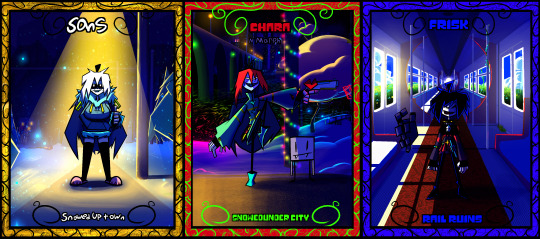

SNOWED UP TOWN
snowed up town is like snowed inn but bigger more advanced more monsters more buildings some with sans'es graffiti on them and then you have the train on the save roof i just think its neat it shows how big this underground is
SNOWED UNDERCITY
snowed undercity is a big downtown area of snowed up town its like an old 80s anime kinda city pop place lots going on never a dull moment there the light's, the music, the coziness the new have to get ridge leading to it it's the only way to get there and yes its by train and then below you have the void stream of hope and dreams (temp name maybe) it is bottomless and doesn't to feel like water and yet you can float if you have hope
THE RAIL RUINS
the ruins of a long lost rail yard..? but why does it have a sky? how are the fields so long and unraveling how does it have life...truly a bizarre place as the train does not move and there are multiple cars filled with different items... monsters seem to live nicely here..why don't they just go through the door? the sense of hope hear is intoxicating the feeling of adventure is alive a sense of FUN is very alive here
MUSIC
sans's theme funny name cuz they a mamma who wanna protect their family
i would like to say that i used a melody from a song i like in the first half its from a klaatu song called were off you know and i used a zelda song too, song of storms too
extra art i did
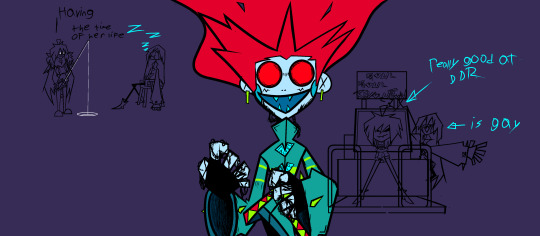

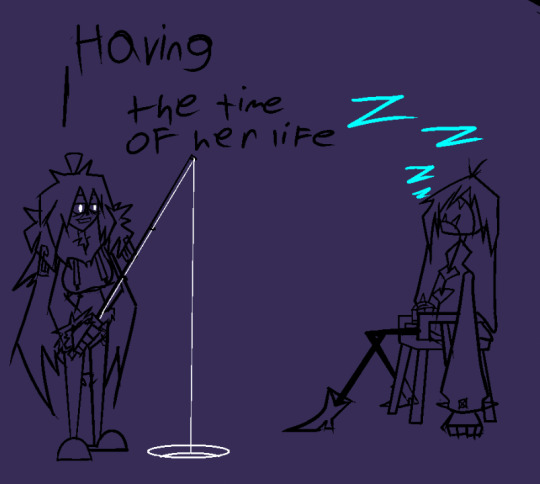
you may draw these characters if you wish there will be more designs soon i h o p e
im unsure if this should be a comic or not or maybe it should be something else im unsure i have alot of ideas for it!
#undertale art#undertale#undertale au idea#undertale au#ut au#undertale chara#sans undertale#sans#chara#digital art#drawing#art#frisk#undertale frisk#transparent soul au#au idea#frisk undertale#transparent soul chara#transparent soul sans#transparent soul frisk#music#fan made music
21 notes
·
View notes
Text
fearless tv and red tv were essential to speak now tv sounding as authentic as it does. the clear artistic path is fascinating and so special to follow in real time, as a longtime fan of taylor. fearless was the obvious beginner - it rocketed her to stardom and was a grammy darling. it has the most true to form production and vocals, with every banjo twang and vocal riff down a tee and polished to top it off. red was more experimental - and rightfully so, given the whole “sonically incohesive” situation. the vault tracks swung wildly from country to pop, just like the og album.
enter speak now. when it came out, Taylor was in a precarious situation as a young girl in media. aside from what she wrote in the forward, she had to grapple with being relatable but not too vulnerable. she needed to be likeable but not needy, in the eyes of the media (and her label, and herself). so she made speak now. a quintessential 2010s coming of age album. she succeeded it flawlessly with writing her songs all of her own, but the lyrics are masterful examples of storytelling and catharsis. from the exuberance of sparks fly to the devastation of last kiss, every emotion was authentic, which is why so many of us “older” swifties immediately identified with it, no matter which parts.
the production feels more like the og than fearless because fearless served a very specific function: proving she could make the old masters worthless, and she could chart doing it. red took some chances, some sticking (girl at home) and some… not so much (wanegbt…), but speak now leans into the vulnerability that the media would have scrutinized in 2010. I can see you proves that she has been aware of the intrusive lens of stardom for a while, far longer than I know places or even the lucky one, but at the time it was scary and enthralling. Mine leans into its country twang, the vocals and guitar strumming more classic country than the pop-country song that was super marketable in 2010. Sparks fly starts slow and quickly accellerandos into its full tempo, just like how she played it in 2009 at the end of the fearless tour as a surprise. her voice cracks in haunted and never grow up are much clearer, especially with how amazing her vocals are now. she still sounds pissed in better than revenge, but the lyric change shifts the blame from the woman to joe as well for cheating on her, rightfully so. while fearless proved that she could create a sonically near-perfect copy, speak now was the most authentically she could recreate one of her earliest albums up to now.
#taylor swift#speak now#speak now tv#speak now taylor’s version#lyric posting#lyric meta#Taylor’s version
12 notes
·
View notes
Text
youtube

Release: March 16, 2009
Lyrics:
(you need more, you need more, you need more,
You need more, you need more, you need more,
You need more, you need more, you need more)
Boy it's tough getting on in the world
When the sun doesn't shine and a boy needs a girl
It's about getting out of a rut, you need luck
And your stuck and don't know how (oh)
A big bucks Hollywood star
(don't have to drive)A super car to get far
(don't have to live)A life of power and wealth
(don't have to be) beautiful but it helps
(don't have to buy)A house in Beverly hills
(don't have to have)your daddy paying the bills
(don't have to live)A life of power and wealth
(don't have to be) beautiful but it helps
You need more than a big blank check to be a lover, or
A gulf stream jet to fly you door to door
Somewhere chic on another shore
You need more you need more you need more you need more you need more you need more
You need love you need love you need love
Too much of anything is never enough
Too much of everything is never enough
Boy it's tough getting on in the world
When the sun doesn't shine and a boy needs a girl
It's about getting out of a rut, you need luck
And your stuck and don't know how (oh)
A big bucks Hollywood star
(don't have to drive)A super car to get far
(don't have to wear)A smile much colder than ice
(don't have to be beautiful but it's nice
You need more than Gerhard Richter hangin' on your wall
A chauffeur-driven limousine on call
To drive your wife and lover to a white tie ball
(you need more, you need more, you need more,
You need more, you need more, you need more) you need love
I believe that we can achieve the love that we need
I believe, call me naive
Love is for free
Songwriter:
A big bucks Hollywood star
(don't have to drive)A super car to get far
(don't have to live)A life of power and wealth
(don't have to be) beautiful but it helps
Beautiful that it helps
Beautiful that it helps
Brian Higgins / Chris Lowe / Miranda Cooper / Neil Tennant / Owen Parker / Tim Powell
SongFacts:
"Love, Etc." is a song by English synth-pop duo Pet Shop Boys from their tenth studio album Yes (2009). It was released on March 16, 2009 as the album's lead single. The single was also made available on the US and Canadian iTunes Store on March 24, 2009, becoming the duo's first single to be released in the US since "Break 4 Love" in 2001, albeit as a digital download.
The song was written by Pet Shop Boys together with the production team Xenomania, who also produced the track. Pet Shop Boys describe "Love Etc." as "a post-lifestyle anthem that sounds like nothing we've done before." The single became the duo's ninth number-one entry on the Hot Dance Club Songs chart ; The pair overtook Depeche Mode and broke the record for the most chart-toppers by a duo or group on the Billboard dance charts.
The music video was directed by Dutch digital artist Han Hoogerbrugge. The website Stereogum described it as a "horizontally scrolling animated video that's part Sonic The Hedgehog (outdated video game reference!) and part Pac Man (devouring hearts, shamrocks and cash), with a number of Chrisses, Neils and others scream, bow, expose themselves and transform into Draculas.
#new#new music#my chaos radio#Pet Shop Boys#Love etc.#music#spotify#youtube#music video#youtube video#good music#hit of the day#video of the day#2000s#2000s music#2000s video#2000s charts#2009#pop#uk r&b#alternative indie#electronic#synth pop#dance pop#lyrics#songfacts#931
2 notes
·
View notes
Note
Hi Cossette! I enjoy MUNA's discography (their self-titled release from 2022 is really good) :D I just quickly looked up some details on The Japanese House's upcoming album and there will be a MUNA collab!!
One of my favourite Phoebe Bridgers features happen to be Silk Chiffon from MUNA's self-titled album! I also enjoy her more acoustic collabs e.g. Nothing New, but Silk Chiffon is a pleasant surprise in that the song is more sonically polished and upbeat (though the lyrics are nevertheless very moving)
For Speak Now TV, I'm most excited about the vault tracks: the previously unreleased self-written songs that she wrote in 2009 ~ 2010. I don't have any specific songs on the top of my mind, but I'm certainly preparing to be surprised by her choices!
In addition to the vault tracks, I'm also looking forward to listening to Sparks Fly and Back To December with the much improved production & vocals in the re-recording! (and yes!! fingers crossed that she will expand more of Speak Now & the Debut in the later shows of Th Era Tour)
I just looked up about Gracie's upcoming deluxe version of Good Riddance and am looking forward to hearing the bonus tracks :D Listening to deluxe / expanded versions is fascinating that you get to appreciate a musician's creative process towards working on the main album e.g. the songs that almost made it to the standard tracklist and it's a joy to see these songs seeing the light of the day 💖
Gracie had mentioned about personal growth whilst working on Good Riddance, so the deluxe tracks will be a wonderful opportunity to listen to the additional songs that paved way towards her maturing artistry!
P.S. Speaking of album tracks, what are some of your all-time favourite deluxe / bonus album songs?
hello jennifer!!! i hope you're having a good thursday! i saw something about a MUNA collab, and saw something about bon iver also being on the album and i'm so so excited. i know justin has worked with the japanese house before on dionne, and i really like the way their voices blend together so i'm really excited for whichever track he ends up on — i'm just so excited for in the end it always does to drop! i've been listening to sunshine baby nonstop (to be fair, i haven't been listening to a lot of music this week though).
i've only listened to the MUNA "essentials" playlist and i really like the things i've heard but i need to do a proper deep dive! i downloaded all three of their albums to listen to on the plane tomorrow, but we'll see if i actually end up listening to it! speaking of speak now TV, i wonder when we'll get a speak now TV vault puzzle! i would love for debut to get it's own section (and for more speak now songs on tour), but i feel like it's pretty set in stone now unfortunately, at least for the US leg. i'm still crossing my fingers for surprise songs though! there are a lot of things on speak now that i'm attached to (like the shaky breath in last kiss) that i hope she'll keep for the rerecording too! and yes!! i'm super super excited for gracie's deluxe good riddance! i ordered the vinyl a little bit ago, and i'm really glad that i waited to order it (there was a good riddance vinyl available in the UK that i almost caved and bought, but it didn't include the deluxe tracks). noah kahan is also, i believe, announcing the deluxe version of stick season today (?) which is exciting! i think his vinyl is also going to include the deluxe songs, which i'm really thrilled about. i'm still a little bit bummed that the midnights 3 AM songs aren't on vinyl!
i think my favorite deluxe/bonus album songs include: if this was a movie, come back...be here, jump then fall (i'm counting fearless platinum edition), the great war, new romantics, you are in love, wonderland, bruises by reneé rapp, it'll all work out by phoebe bridgers, and then all four tracks on the emails i can't send: fwd album by sabrina carpenter (opposite, feather, lonesome, and things i wish you said). i feel like i'm missing some songs here, but that's all i can think of right now! what are some of your favorites? 🤍
2 notes
·
View notes
Text
Diligent Blog # 1
Here's some music from my childhood! These are from forms of media that have a OST or soundtrack that I think is a good listen. When writing this, I started off listing music that I liked with no criteria, and it got too long for my liking. So, this list only includes stuff from 10 or more years that I watched/played.
There's probably more.. but I don't remember them right now.
Anime/Animation
Yu-Gi-Oh! Duel Monsters - I think I enjoyed every soundtrack, but I know that the english theme song slaps. I don't care what anyone says, the voice actors and soundtracks created for english dub is iconic. Joey Wheeler is iconic. Everyone in this children's show about a card game is iconic. Even Tristan.
Barbie - Barbie as the Princess and the Pauper, Barbie and the Diamond Castle. nostalgic, screams to my girly soul. Lots of fond memories with them.
Kung Fu Panda - The first movie.
Pokemon The First Movie - Mewtwo Strikes Back (1999) - The American version. I don't know enough about music theory, but the leitmotif((s)?)) used for this movie? Perfection.

Dramas
My Girlfriend Is A Gumiho - this is a korean drama from 2010. It made me very happy when the OST was finally available on spotify.
Iljimae (2008) - a historical korean drama. It is, to this day, a drama I highly favor. The soundtrack created for it is beautiful and is used so well with the scenes from the drama. It is probably a huge factor on why I enjoyed it so much.
You're Beautiful (2009) - unrelated but I had a childish crush on one of the characters, Jeremy. Which in turn lead me to have a crush on the actor, Lee Hong Ki. He is the lead vocalist for the band F.T. Island.
Artists/Musicians/Bands
Vocaloid Producers - wowka, ryo, hachi (Kenshi Yonezu), DECO*27, Neru , there are songs from other producers but they are the most memorable ones to me. I don't follow vocaloid anymore, though I still like to revisit the older songs.
K-Pop 2nd Generation to Early 3rd Generation- 2NE1, Girls Generation (SNSD), TEEN TOP, SHINee, Wonder Girls, Brown Eyed Girls, these are only a few mentions. Second generation of kpop is from 2005 to like 2011. The times back then for K-pop were a little more... vibrant if I remember it right. Experimental, eccentric and stark eye liner, but with matching iconic songs. The ones I can recommend off the top of my head are 'I Got A Boy' from Girls Generation. That one is fun. I heard someone describe it to be similar to Bohemian Rhapsody with it's organized chaos. SHINee 'Replay' and- y'know what here: Old Legendary Kpop Songs.
Games
Persona 4 - I started with Persona 4 with a game play video on Youtube. I remember downloading my favorite soundtracks (shout out to Youtube To MP3) to listen to on my way to school when I finally owned a phone like 3 years later. Can you believe I haven't played the game itself until last year?
Super Mario Bros Melee - The only 3-ish consoles I ever had when I was young were the game cube, Wii and the 3ds. I am listing this one because unfortunately, I never got to play any of the independent games that the soundtracks were from even though I heavily enjoyed them.
Sonic Heroes - The sound effects along with the stage themes really scratched an itch somewhere in my brain. I never got to finish it though. I didn't have that save thing for the game cube so I played every game the furthest I could until it powered off. That means I never got to unlock all the characters for melee.
Super Mario Galaxy - I finished this one! What I said for this is short but the soundtrack is wonderful.
Wii Sports - There's nothing to explain here.
Team Fortress 2 - why is this here, more importantly, why is there 3 versions of My Gun
0 notes
Text
Watch: EVANESCENCE Joined By P.O.D.'s SONNY SANDOVAL For 'Bring Me To Life' Performance At 2024 SONIC TEMPLE Festival

P.O.D. frontman Sonny Sandoval joined EVANESCENCE on stage Thursday (May 16) at the Sonic Temple Art & Music Festival at the Historic Crew Stadium in Columbus, Ohio to perform the latter band's breakthrough 2003 hit "Bring Me To Life". Video footage of his appearance can be seen below.
In a recent interview with Canada's iHeart Radio, EVANESCENCE singer Amy Lee reflected on "Bring Me To Life", which featured guest vocals from Paul McCoy of 12 STONES. She said: "When we first did the song, I didn't wanna do the rap. That was like a concession kind of a thing with the label, trying to find a place for us. And LINKIN PARK was hot on the radio at the time. That was part of their [the label's] calculation of what was gonna help break a female through. And it was hard for me, actually. I got to write it. I was a part of it, like all of it, Paul was wonderful — still wonderful. But it was something that I like had an internal struggle with. But all these years later, with just — I don't want to use the word 'success', 'cause it's deeper than that, but the life that that song has had and all of these live shows, now that we're at this point now, 20 years later, and playing festivals with so many… It's just really, really, really an amazing gift to have our big song be a duet, because whenever we're out with somebody who's even remotely kind of in the realm of that would fit that voice, we get to have them up on our set. So that's been this really fun guest finale moment a lot. And even if the person isn't like the most famous person — it's cool when that happens — but when it's not, too, it just changes the energy of the song and is this easy, plug-in, really fun… I don't know. I don't know if that's the answer you were looking for, but I've gotten to a point where I'm super grateful that we have that song for that reason. The crowd goes nuts and everybody knows it, so it's super fun to have it be a collab."
Back in February 2022, EVANESCENCE's music video for "Bring Me To Life" surpassed one billion views on YouTube. The Philipp Stölzl-directed clip, which was uploaded to YouTube in December of 2009, was filmed in Romania in January 2003. It features Amy in a night gown and barefoot, in her room, inside a tall building in the city at night. The rest of the band is playing on a higher floor of the building.
The album version of "Bring Me to Life" was included on the soundtrack of superhero film "Daredevil".
In 2021, Amy spoke to Germany's Sonic Seducer about the lyrical inspiration for "Bring Me To Life". The song reached No. 5 on the U.S. Billboard Hot 100 and was EVANESCENCE's first U.K. No. 1 single.
"I remember what I wrote 'Bring Me To Life' about, because I wrote it about my current husband before we were married," she said. "There was this moment — I was in a tough place and in a bad relationship. And my husband now, Josh, at the time was just a friend and a person that I barely knew; it was maybe the third or fourth time we'd ever met. And we went in to go grab a seat at a restaurant while our friends parked the car. And we sat across from each other, and he looked at me and he just said, 'So, are you happy?' And it took me so off guard, and I just felt like it pierced my heart, because I felt like I had been pretending really well, and it was, like, somebody could see through me. And then that whole first verse came out of it: 'How can you see into my eyes, like open doors.' It really made me feel and recognize the sense of yearning that I had to get to a better place. And it really kind of set me out on a journey. And it's amazing that that became the song, the first song that broke us on to the scene and made everyone hear of us, because it was about something — I don't know — something so personal that I was recognizing in my life."
In March 2021, Lee told Alternative Press that EVANESCENCE's original record label Wind Up threatened not to release the group's debut album, "Fallen", if she and her bandmates didn't add a male voice to lead single "Bring Me To Life" to make it more palatable for radio.
"Fallen" sold 17 million copies and won two Grammys, including "Best Rock Performance" for "Bring Me To Life".
EVANESCENCE's latest album, "The Bitter Truth", arrived in March 2021 via BMG. It was EVANESCENCE's first album of original music in ten years.
youtube
0 notes
Text

SUPER MARIO RPG IT IS THE ONLY ONE JUST FOR ME WHEN I PLAY THE GAME, I GET LOST IN A PHASE THEN I FIND OUT I'M STUCK IN GENO'S MAZE
This is one of my favorite games of all time and I haven't played it in over a decade! Not since I put my Wii away, in 2009...Yet, I never forgot how much I adored it. The only reason I didn't freak out when the remake was announced was that....well, obviously my mind has been elsewhere, and I've been occupied....but now that I actually have it? I'm so hyped!!
I cannot overstate how into SMRPG I was. I think I've mentioned it a couple times on this blog over the years when the topic of fav video games comes up, alongside more obvious choices like Splatoon, Smash, EarthBound, Sonic Adventure 2 Battle, Kirby Air Ride....and yet I've never actually gone into detail gushing over this one cuz my hyperfixation for it ended long ago.
But in high school? Junior year specifically, this game was EVERYTHING. Alongside my own playthrough, I watched Chuggaaconroy's LP of it multiple times. I was obsessed with both Mallow and Geno at separate times. The fan song "Rawest Forest" was one of my major single song obsessions that year (and I still listen to in the present, holding the title of "only song that uses the r-word that I like" due to the power of nostalgia)
For god's sake, I made humanizations of Geno and Mallow, as well as anime versions of the whole party, and drew a comic based on "Rawest Forest" that I still have alongside a buttload of other doodles. No, I won't share them. I never shared them, even on DA with my other old doodles. Certain things about the SMRPG ones have aged poorly, so I'm not gonna dig them out. But just take my word for it that my human Mallow in particular was a character I'd doodle CONSTANTLY in class. XD
SMRPG is a game that's very near and dear to me, but unlike my other favorite games, I've only beaten it once. Let's flipping change that. I've heard really positive things about this remake, like how it added more content, but honestly? As long as its faithful enough still the trigger my nostalgia and remind me of why I had so much fun with it, I'll be happy. <3
#lauri talks to herself#super mario rpg#smrpg 2023#merry christmas#watch klaus#its been years so you have no excuse to not have seen that movie yet#you won't regret it#except you might cry
0 notes
Text
For Women's History Month 2021, GRAMMY.com is celebrating some of the women artists nominated at the 2021 GRAMMY Awards show. Today, we honor Taylor Swift, who's currently nominated for six GRAMMYs.
When we met Taylor Swift in 2006, it was immediately apparent that her songwriting approach was like ripping a page out of her diary.
"Just a boy in a Chevy truck/ That had a tendency of gettin' stuck/ On backroads at night/ And I was right there beside him all summer long/ And then the time we woke up to find that summer gone," she lamented in the first verse of her debut single, "Tim McGraw(opens in a new tab)." The way the then-16-year-old Swift could turn personal anecdotes into instantly memorable hooks mirrored the prowess of an industry veteran, appealing to more than just the teenage girls that could relate to a short-lived high school romance.
Now, nearly 15 years later, Swift has introduced another layer of intrigue with a foray into indie folk, unveiling a pair of albums, folklore and evermore, last year. Recorded entirely in isolation after the COVID-19 pandemic hit in March 2020, folklore has been widely acclaimed(opens in a new tab) as Swift's best album, touted for its intimate songwriting and cinematic dynamics; evermore has received similarly glowing reviews(opens in a new tab).
folklore was 2020's best-selling album(opens in a new tab) and earned Swift five GRAMMY nominations at the 2021 GRAMMY Awards show, including her fourth Album Of The Year nod. (evermore will be eligible for the 64th GRAMMY Awards in 2022.) As her 10 previous GRAMMY wins suggest, though, this new chapter isn't an abrupt departure for the star—it's a masterful continuation of her evolution as a singer/songwriter.
If there's one thing that Swift has proven throughout her career, it's that she refuses to be put in a box. Her ever-evolving sound took her from country darling to pop phenom to folk's newest raconteur—a transition that, on paper, seems arduous. But for Swift, it was seamless and resulted in perhaps her most defining work yet. And folklore’s radiance relies on three of Swift’s songwriting tools: heartfelt balladeering, autobiographical writing, and character-driven storytelling.
While there was always a crossover element to Swift's pop-leaning country tunes, her transition from country starlet to pop queen began with Red. The album’s lead single, the feisty breakup anthem "We Are Never Ever Getting Back Together(opens in a new tab)," was Swift's first release to reach No. 1 on the Billboard Hot 100 (and, ironically, scoffed "indie records much cooler than mine"). She declared a full pop makeover with 2014's 1989, but the response proved that her bold move was the right one: Along with spawning three more No. 1 hits, the project won Swift her second GRAMMY for Album of the Year.
From there, 2017’s Reputation, a response to media scrutiny, and 2019’s Lover, an often bubbly exploration of all facets of affection, followed. Although they shared similarly grandiose production, Lover featured a handful of poetic ballads, including "The Archer(opens in a new tab)," a self-reflective love song that teased Swift's folk sensibilities through storybook lyrics and ambient textures.
Swift’s ballads are key in understanding the full essence of folklore. They’ve regularly marked standout moments on each of her albums, both thanks to her poignant vulnerability and rich tone. Fearless standout "White Horse" earned Swift two GRAMMYs in 2009; Red's painstaking "All Too Well" was an instant fan favorite; 1989's "This Love" and Reputation's "New Years Day" provided tenderness amid otherwise synth-heavy sounds.
The raw emotion she puts into her downtempo songs comes alive on folklore, introducing a new wave of neo-classical sonics that elevate her fanciful penmanship to an ethereal level. Whether or not Swifties saw a full indie-pop record coming—at least not yet—the shift isn't all that surprising. Folklore’s romanticized lyrics and relatively lo-fi production are arguably what many fans have been patiently waiting on.
Lyrically, the super-personal nature of Swift’s music has always captivated fans and naysayers alike; diehards and critics dissected each of her albums for its real-life subjects and hidden meanings. While she played into those conspiracies at the time—whether she was revealing names in titles like "Hey Stephen(opens in a new tab)" and "Dear John(opens in a new tab)" or scathing the other girl on "Better Than Revenge(opens in a new tab)"—even Swift herself admits that her teenage method had an expiration date.
"There was a point that I got to as a writer who only wrote very diaristic songs that [it] felt unsustainable for my future moving forward," she told Apple Music's(opens in a new tab) Zane Lowe in December of 2020. "It felt like too hot of a microscope ... On my bad days, I would feel like I was loading a cannon of clickbait when that's not what I want for my life."
That realization is what helped make folklore so memorable: Swift stripped away the drama to let her artful storytelling shine. Sure, there are occasional callbacks to personal happenings ("invisible string(opens in a new tab)" references sending her exes baby gifts and "mad woman(opens in a new tab)" alludes to her legal battle with Scott Borchetta and Scooter Braun). Still, she largely shies away from her autobiographical narratives to make way for her imagination.
"I found myself not only writing my own stories, but also writing about or from the perspective of people I've never met, people I've known, or those I wish I hadn't," Swift wrote in a letter to fans(opens in a new tab) on social media the day folklore arrived. "The lines between fantasy and reality blur and the boundaries between truth and fiction become almost indiscernible."
folklore might be her first full project dedicated to creating characters and projecting storylines, but Swift has shown a knack for fantasy from the start. Tracks like "Mary's Song (Oh My My)(opens in a new tab)" on her self-titled debut and "Starlight(opens in a new tab)" on Red saw Swift craft stories for real-life muses ("Mary's Song" was inspired by an old couple who lived next door to Swift in her childhood; "Starlight" was sparked from seeing a picture of Ethel and Bobby Kennedy as teens). Even when songs did pertain to her real life, Swift often had a way of flipping memories into whimsical metaphors, like the clever clap-back to a critic on Speak Now's "Mean(opens in a new tab)" or the rebound relationship in Reputation's "Getaway Car(opens in a new tab)."
To think that we wouldn't have folklore without a pandemic is almost surreal; it's already become such a fundamental piece of Swift’s artistic puzzle. There was no telling what may have come after the glittering "love letter to love itself” that was Lover, but it seems isolation made the singer rethink any plans she may have had.
"I just thought there are no rules anymore because I used to put all these parameters on myself, like, 'How will this song sound in a stadium? How will this song sound on radio?' If you take away all the parameters, what do you make?" she told Paul McCartney in a November (opens in a new tab)Rolling Stone(opens in a new tab) interview(opens in a new tab). "And I guess the answer is folklore."
Even if she hasn’t been making indie music herself, Swift has shown an affinity for the genre over the years through curated digital playlists(opens in a new tab). Those included four songs by The National including "Dark Side of the Gym," which she references on folklore single "betty(opens in a new tab)," and "8 (Circle)" by Bon Iver, Swift's collaborator on folklore's gut-wrenching "exile(opens in a new tab)" as well as evermore’s title track. (���Exile” is one of folklore’s GRAMMY-nominated cuts, up for Best Pop Duo/Group Performance.)
The National’s guitarist Aaron Dessner co-wrote nine and produced 11 of folklore's 16 tracks, soundtracking Swift's imaginative tales with sweeping orchestration and delicate piano. Their partnership started with "cardigan(opens in a new tab)," a melancholy take on teenage love(opens in a new tab) that's up for Best Pop Solo Performance and the coveted Song of the Year. The team-up was a dream come true for Swift, a self-proclaimed National superfan and a career highlight for Dessner, who shared in an Instagram post(opens in a new tab) about folklore that he's "rarely been so inspired by someone." He sees the album as a pivotal moment for both Swift's career and pop music.
"Taylor has opened the door for artists to not feel pressure to have 'the bop,'" Dessner shared with (opens in a new tab)Billboard(opens in a new tab) in September. "To make the record that she made, while running against what is programmed in radio at the highest levels of pop music—she has kind of made an anti-pop record. And to have it be one of the most, if not the most, successful commercial releases of the year that throws the playbook out.
"I hope it gives other artists, especially lesser-known or more independent artists, a chance at the mainstream," he continued. "Maybe radio will realize that music doesn't have to sound as pushed as it has. Nobody was trying to design anything to be a hit. Obviously, Taylor has the privilege of already having a very large and dedicated audience, but I do feel like it's having a resonance beyond that."
Swift's other primary folklore collaborator was Jack Antonoff. He has been her right-hand man since they first paired up on 2013's promotional single "Sweeter Than Fiction(opens in a new tab)" (Swift referred to him as "musical family" in her folklore announcement(opens in a new tab)). Even after years of creating stadium-ready pop smashes, Antonoff said in his own folklore Instagram post(opens in a new tab), "I've never heard Taylor sing better in my life / write better."
As Swift recognizes herself, folklore ushered in a new way of thinking for the superstar that not only brings out her best, but sets a promising precedent for what's to come. "What I felt after we put out folklore was, 'Oh wow, people are into this too, this thing that feels really good for my life and my creativity,'" Swift added in her interview with Lowe. "I saw a lane for my future that was a real breakthrough moment of excitement and happiness."
Her enthusiasm is tangible on both folklore and evermore. Dubbed folklore’s sister record, evermore further expands Swift’s newfound mystical atmosphere. Much to the delight of many Swifties, the follow-up also calls back to her country beginnings on tracks like the HAIM-assisted “no body, no crime(opens in a new tab),” as well as her pop expertise on more uptempo cuts like “long story short(opens in a new tab).”
Together, the albums are a momentous reminder that Swift is a singer/songwriter first. Her wordcraft is some of the most alluring of her generation, and that’s never been lost on her music, regardless of the genre she’s exploring. But now that Swift also feels she's at her best, it’s evident folklore was just the beginning of Taylor Swift in her finest form.
49 notes
·
View notes
Note
You mentioned western localizations messing with Amy. Can you elaborate if you don't mind?
Of course!
I think the first thing to keep in mind throughout all of this is that I was referring to the old notion of “Amy is a psycho girl chasing after someone who isn’t remotely interested in her”. This is the big impression Sonic games (and I guess to some extent Archie Sonic, but I don’t want to get in there) left on fans during the 2000′s, and it comes mostly due to two main reasons:
The differences in western culture versus japanese culture (how we see relationships in general, the actual tropes surrounding Amy, etc.)
How the actual localization process was handled for each game, like the way Amy acts toward Sonic and other characters, how the games play said acts (cute vs annoying) and the way Sonic reacts to her presence.
It’s no secret that localization works during that era were spotty at best (that’s why you hear Ryan’s Sonic yelling “teriaaaa!” in SA2, or the general weirdness surrounding SA1), and while I personally don’t blame the people that worked on localizing the games (after all, the overall quality of videogame storytelling was pretty shaky back in the early 2000′s), I can’t ignore just how damaging those works ended up being for the canon. For example, cutegirlmayra talked about the differences between japanese and western Sonic for years now, take this quote from her post, a quote that I believe nails this whole thing on the head:
America treats Sonamy much like they do their franchise, a meme or joke to be poked fun of. Whereas, with a much more refined atmosphere, Japan treats Sonamy as an endearing and lovely couple. Though both resign to say they can’t really see Sonic ever ‘settling down’ or really being focused on romance. And,… that makes since to me. Knowing who Sonic is. But even that doesn’t mean he can’t have a crush XD (The heart wants what the heart wants, lol!)
More recently, stuff like “Unfortunately, I’m not inconvenient for my girlfriend” came to light, and that’s one of many examples where japanese Sonic was way ahead of its western self. This particular quote is from Sonic Battle and in the english version you don’t get anything remotely similar to that, instead Amy is left to look like she’s a crazy stalker, or that Sonic doesn’t accept her advances to a degree (that’s one major problem, how western Sonic tends to feel like he’s actually rejecting Amy while she keeps on trying.) It’s not coincidence that Sonic Battle is regarded as one of the worst portrayals of Amy in a Sonic game.
If you start digging on what the creators actually intended for Amy, you'll find lots of good intentions toward her and the framing of her dynamic with Sonic (which isn’t the only aspect of Amy, mind you, but my claims about western localization originally came from a SonAmy post so I naturally focused on that, sorry haha.)
For example, last year I looked into how Sonic Unleashed handled SonAmy, and while my initial research was pretty sweet (the english version of Unleashed!Amy is really good if you spend time talking to her), the real kicker came as soon as we (me and cutegirlmayra) started looking into interviews with ex-Sonic Team writer Shiro Maekawa and cross-referencing information regarding the actual writers that were involved during that 2000′s era. The result? There was an entire council at SEGA of Japan dedicated to approve the way Sonic characters were presented in all official media, and they approved all of the key SonAmy moments back then, even more that western audiences didn’t get to see (more on that below.) Most if not all the japanese Sonic writers involved in that era (Maekawa was both a writer and part of said council) left around the end of the decade, after Sonic Unleashed (2008) and Sonic and the Black Knight (2009), and ever since that most of the problems shifted from “this is how SEGA of America is localizing Sonic games” to “this is the very poor state of Sonic writing in general”, so, dead end for now.
Then you have situations like with Sonic X, a show handled by Sonic Team and the official Sonic writers of that era working in some of the most iconic episodes... just to see their work censored by 4kids in America and the subsequent dubs that used that version as a basis (from what I’ve heard not all dubs are censored, though.) That’s why you’ll see fans imploring you to watch Sonic X in japanese instead of the english dub, since the series was a lot more involved with the pairing and the general simbolism of some of its touching moments (they used actual love songs for them, for crying out loud), which led to some funny facts, like how the Latin American Spanish and the French dub both ignored the mandate about muting Sonic’s words to Amy in Episode 52, leading to moments like Sonic promising Amy he won’t leave her again (LatAm) or just straight up telling he loves her (the french were on fire with that one.) Sonic X was the one true vision of Sonic Team, and the way it was butchered for western audiences is still baffling to this day.
So, what’s the deal with Amy then? In theory she’s a cheerful, happy-go-lucky girl with a very strong sense of justice, super-determined to help anyone in need (even enemies like Metal Sonic) and, depending on the situation, pretty impulsive. She’s particularly loyal to her friends, and she acts like the emotional support of the group. You’ll see her filling that role regardless of how good or bad the localization is (SA2 Amy helped Shadow realize his true purpose, Heroes Amy is the beating heart of her whole team, Unleashed Amy is the only one who doesn’t lose hope on Sonic when Perfect Dark Gaia rises); yet the ways by which these traits were shown in the games varied a lot, and that’s how we reached a point where a good chunk of the fandom thinks Amy is a stalker. Japan portrayed her acts as cute, as very respectable traits of a great female character; the west portrayed her mostly as a nuisance the gang had to carry around, even to the point of misinterpreting some of her quotes that aren’t actually bad (for example: “If I had to choose between the world and Sonic, I would choose Sonic!“ in Sonic ‘06.) And while this is no longer the case, nowadays there’s a whole different discussion surrounding making Amy better by making her “more mature” (which is also another topic raised here in the west, like, this whole discussion never ends! haha)
I feel like I got lost and came back several times while writing this reply. At the end of the day, it’s a long topic to tackle and I think the best I can do right now is forward you some more information. My friend beev did some great work translating my own Spanish articles tackling the Japan vs Western differences (it’s pretty much most of this reply.) And then there’s @skull001, he’s very vocal about the ways Amy’s character was messed with (including stuff like Amy being missing from the back of Advance 1′s box, the Sonic X english dub or the fact SEGA is still reluctant to count her as part of Team Sonic), and if there’s someone I’d listen when it comes to knowing pretty much everything about Amy, it’s gotta be him... and cutegirlmayra, of course. I hope this helped, though!
#ask latin dr robotnik#sonic the hedgehog#amy rose#sonamy#sega#hannahcbrown#i'm sorry this took way too long to write haha
124 notes
·
View notes
Text
My Review of Higurashi no Naku Koro Ni GOU

(a.k.a. When They Cry Gou)
I know what you’re thinking. Why the heck am I reviewing this anime again? I’ve already written a review in 2009 and re-polished it in 2016. (Here it is BTW) I’ve made my point on who I like, hate, what ships are worthy, and poked fun at all the deaths that happened throughout the series. I think some time has passed that I should say some thoughts on this…um, story. After all, Higurashi is one of my favorite animes.
STORY: Ah shit, here we go again!
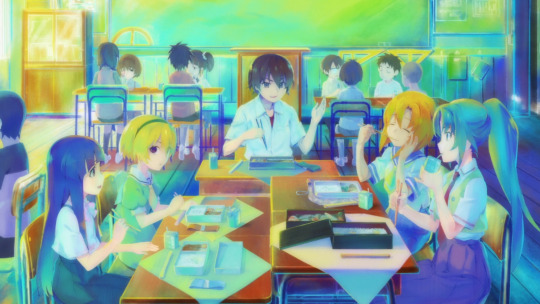
Higurashi or When They Cry is about a boy named Keiichi Maebara who recently moved to a place called Hinamizawa. And ever since moving to this town, he’s found his days are filled with fun mischief with fellow friends Rena Ryuuguu, Satoko Hojo, Mion Sonozaki, and Rika Furude. But little does Keiichi know that there’s a little murder mystery that surrounds the town. During a town festival known as Watanagashi (or Cotton Drifting), there’s usually one or two people that go missing or turn up dead. And this year, Keiichi is next. So let’s relive the horrors that plague the town of Hinamizawa and…
One episode later.

Wait, what the…?! It’s episode 2, why are we seeing Hanyuu? I don’t remember that in the manga. The visual! THE VISUAL! WHAT THE FUCK?! ISN’T THIS SUPPOSED TO BE A REBOOT? WHAT THE FUCK?! WHAT THE FUCK?! WHY IS THERE AN ADULT RIKA?! WAIT, IS THAT ADULT RIKA OR BERN? IS THIS GOING TO BE THE PARALLEL UNIVERSE TO THE WITCHES OF UMINEKO?! THE SHADOWS IN THE OPENING ARE TOO FAMILIAR FROM OTHER WORKS! Ryukishi07, you magnificent, fucking troll master for keeping this hidden until the second episode’s air date!
Many of us did not see this coming. When they announced a new Higurashi series that was going to be done by a different studio, many of us speculated whether this was going to be a reboot or a sequel. But then we got the PV trailers and it looked like we were going to get a reboot to correct the mistakes Studio Deen made years ago. Rika’s head doesn’t look like its gonna snap off because her body is so small in comparison. Improvements! I mean, they showed everything we were already used to like the yandere girls, the original soundtrack, the original freakin’ cast, and death by baseball bat. Hell, the first episode ended with an Eiko Shimamiya song! It was on track to being a reboot! A better looking reboot!

Here in lies the sequel aspect! After episode one, we get a scene that isn’t usually seen until the Kai part of Higurashi (a good 4-5 arcs away). And they give away the secret that Rika Furude is repeating the timeline of June 1983 over and over because she keeps dying. And as the series progresses, you notice little things different from the original series. Many of the well-known storylines end much differently than what you remember. Instead of Keiichi killing Rena and Mion with a baseball bat, you’ve got Rena going psycho on Keiichi. And Rika’s fate is somehow worse than the stories of the original series. So let’s head back to Hinamizawa to hear the cicadas cry and watch a murder mystery unfold.
THE SUB: All the original voice actors have returned to voice their respected roles. Perfection in a nutshell!
LICENSING: You’ve gotta be shitting me!

As I’ve mentioned years ago in my review, the original Higurashi anime went through a turbulent time being licensed in the states. It was originally licensed and dubbed by Geneon. But once Geneon collapsed, FUNimation licensed it and did absolutely fuck all with it. Geneon could only manage to squeak out one season. At this point, FUNimation was picking up titles that Geneon used to have before it fell under including Familiar of Zero, Kyou Kara Maou, and yes, Higurashi. All of these titles mentioned here were done absolutely nothing with despite having cult followings, second seasons, and OVA’s.
A year or two after licensing it, the license expired for Higurashi. For nearly six years, the only copies you could get were out of print and estimating at $500 at the very least for a full collection. Single DVD’s could be found in rare shops, but it would take like 13 years to complete the fucking collection if you did it that way. And that was only for the first season. Second season, the best all of us could do was bootleg DVD’s from Japan Town or fansubs with glaring errors for the best season to Higurashi. We had to deal with this shit until Sentai Filmworks licensed and released the first 2 seasons and the Rei OVA’s.
AND NOW YOU’RE TELLING ME FUNIMATION IS CLAIMING HIGURASHI ALL FOR THEMSELVES?!
Where the shit was this love 10 years ago when we were asking politely to release Kai? People ignorantly blew Higurashi off for years because season two was never released in the states until 2016 because they thought the damn anime ended after Rena held up the school. I’m already irritated with FUNimation after the Interspecies Reviewers debacle and I’m still quite butt-hurt over them re-releasing Nichijou with a dub to make a quick buck. Licensing Higurashi just brings back old anger. Don’t get me wrong, I’m happy Higurashi is legally licensed and can be seen on at the very least Hulu. It’s just that I hold grudges and this was a big one.
THE DUB: Holy…um, okay! This is a rather big gulp to take in. As I’ve repeatedly mentioned in past reviews, the Higurashi dub was a mixed bag of okay, bad, and oh gasperts kill it with fire. So, not great! The good folks at Geneon (before bankrupting in America) dubbed the first season with a good chunk of folks that put their fake names to the credits. Again, not great! To me, there were some aspects of Megan Hollingshed, Mela Lee, and Grant George’s performances of Mion, Rena, and Keiichi that were okay. SOME! John Snyder and Karen Strassmen as Ooishi and Takano were the best out of that dub. Everything else was just irredeemable! It needed a redub, an overhaul, and a spit-shine. For years, I’ve wondered who would be the dream cast. Sentai Filmworks unfortunately never dubbed the remaining seasons when they released them. Would Luci Christian be the heavenly voice to do Rika Furude? Could we get Hilary Haag to do Satoko? Okay, that never came to pass.
This dub is a breath of fresh air. Rika doesn’t sound like Mihoshi. Satoko doesn’t sound fake, Keiichi doesn’t sound like a weird Sonic the Hedgehog. It’s perfect. ESPECIALLY BRITTANY LAUDA AS SATOKO! I knew the second she was cast as Satoko that she was going to excel the fuck out of this role. And I was not disappointed! The only voice I’m still not quite used to is Michelle Rojas as the Sonozaki twins. Probably because I was somewhat okay with Megan Hollingshed’s voice in the 2006 version that it’ll take some time! And we FINALLY got a voice for Hanyuu. I am super excited that Xanthe Huynh is the voice and I know she’ll do great with this role! With all of that said, here’s what you might recognize these folks from.
*Keiichi is now played by Khoi Dao (known for Kiriyama on March Comes in Like a Lion, Murata on Demon Slayer, Chaka on Jojo’s Bizarre Adventure Pt. 3, and Iskhan on SAO: Alicization)
*Rena is now played by Emi Lo
*Mion/Shion is now played by Michelle Rojas (known for Shizu Delta on Overlord, Touka on Assassination Classroom, Minase on Psycho Pass, Kanan on Love Live Sunshine, and Kusakai on Keijo!!!!!!!!)
*Rika is now played by Apphia Yu (known for Rio on Assassination Classroom, Marie on Black Clover, You on Love Live Sunshine, Victorique on Gosick, Natsumi on Danganronpa 3, and Laki on Fairy Tail)
*Satoko is now played by Brittany Lauda (known for Riko on Made in Abyss, Meidri on Interspecies Reviewers, Lessar on Index III, and Ichigo on Darling in the FranXX)
*Hanyuu is played by Xanthe Huynh (known for Menma on Anohana, Haru on Persona 5, Hanayo on Love Live, Hidomi on FLCL: Progressive, PallaPalla on Sailor Moon Super S [redub], and Sachi on SAO)
ANY CHANGES IN YOUR HATE-O-RADE:
Okay Medea, let-a-rip!
*inhales and exhales*
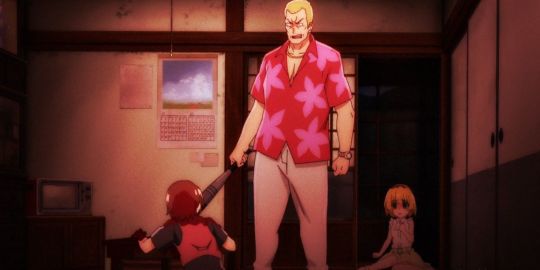
Teppei Hojo is trash. He is ultimate trash. This fucker needs to be murdered in every timeline. He is a turd in a Glenn Quagmire shirt. Him and his wife are trash. And when this pile of trash is cheating on that pile of trash, he sleeps with peak trash named Ritsuko. Teppei Hojo needs to die in every timeline. Whenever Keiichi bashes this cum-burger’s head in with a blunt instrument, I scream at the top of my lungs, “DIE SCUM, DIE”! And nothing, I repeat, NOTHING will change my opinion of Teppei Hojo.
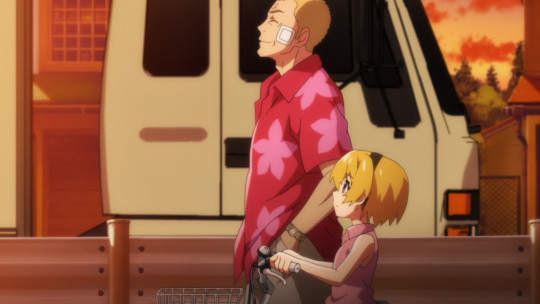
Episode 23.
Oh, fuck you Higurashi Gou!
MUSIC: Okay, thank you for proving me wrong. I did not despise the opening theme. Having Higurashi with no Eiko Shimamiya is like having Pokemon with no Rika Matsumoto. Or Rozen Maiden with no ALI PROJECT. But this new opening is fine by my standards.
That’s right, get the niceness of the review before I get angry down below.
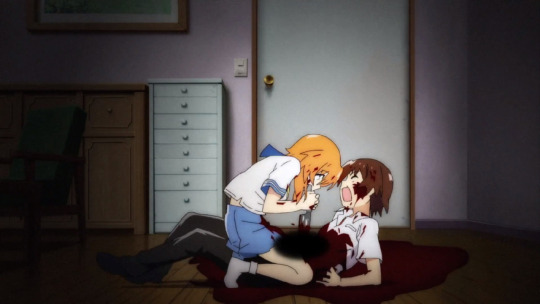
THESE TIMELOOPS: Rika tries to find solutions to end her time-loop in June 1983. Much like the original series, we follow stories from the Onikakushi-hen, Watanagashi-hen, and Tatarigoroshi-hen arcs (the first three stories to Higurashi, although now these have different names). However, all of these arcs have different endings. And after a positive turnaround with Satoko escaping from her abusive uncle, shit goes south when Detective Ooishi, who up to this point has never suffered under the Hinamizawa Syndrome or died a painful death goes on a murderous rampage. Higurashi style! That means, he’s after Rika Furude, will slaughter anyone in his way, and scratching his neck because he sees maggots (part of the hallucination effect).
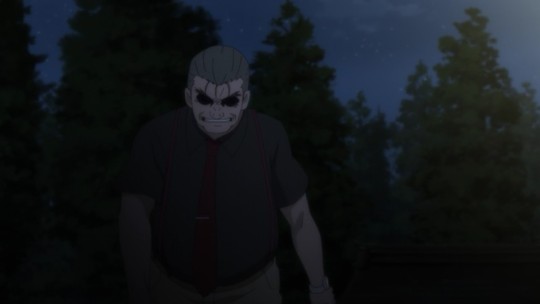
What the shit? Ooishi for the most part has been a great guy. With the exception of the Tatarigoroshi-hen storyline, he was a nice guy! In the limbo with Hanyuu, Rika now remembers who has killed her. Every time Rika dies up to this point, she never remembers who was the cause of her demise. Hanyuu implanted that power to remember the deaths and a clue for Rika to use and then she disappears.
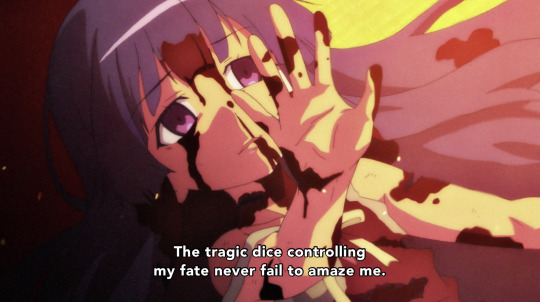
Now seriously, imagine Rika’s plight here. She has been repeating the month of June 1983 for over a hundred years. And each of these times she repeats, she’s horribly murdered. Rika got the shit-end of the deal in the murder department in the original series, including being dissected on while alive. Then, leaving her bloody, naked corpse out in the open of the Oyashiro altar! She’s tired of this shit! She wants to live a happy life away from Hinamizawa. She wants to grow older, become a teenager, and have fun. And this series made it worse by having her die four times in one episode. Not just that, but murdered by the most unexpected people including Akasaka, Chief Kimiyoshi, Mion’s mother Akane, and Keiichi. Keiichi has never killed Rika in any of the timelines up to this point. He has killed Mion and Rena, but never Rika. Keiichi loves Rika! Welcome back to A Million Ways to Die in Hinamizawa.
I’ll just add decapitation, drowning in a lake, set on fire, drowning in a sewage pipe, and death by…um…
Alexa, play Chandelier by Sia.
ENDING: We all know by now that in the original series, Miyo Takano is the betrayer and the reason behind all the murders during the Cotton Drifting Festival. This time, it’s someone closer to Rika that’s causing Rika so much pain. After we watched the worst kinds of murders happen to Rika, the episode after gave us our answer. Satoko, Rika’s friend and confidant is not happy that Rika is turning her back on Oyashiro and Hinamizawa. All the while pulling out her intestines!

Oh Higurashi, don’t stop being gory!
Yes, Satoko is aware of past timelines much like Rika and is almost on a god-like state. So what the hell happened to her? I know Satoko’s past has been a cluster-fuck of horror with her brother disappearing, her parents dying, and every form of abuse from her uncle. But she was able to prevail after all that. After surviving 1983, a lot has changed in Hinamizawa. The three big families of Hinamizawa put an end to the Cotton Drifting Festival and claiming there is no curse of Oyashiro. Mion and Shion moved on and are going to high school. And Rika decides she wants to move away from this village. By attending St. Lucia! And she wants to do this with Satoko.
Oh, if you don’t recall St. Lucia, Shion attended this academy until she escaped during the Meakashi-hen arc. It was also the same school that Ange from Umineko attended. But of course Ange attended it in the 90’s and we are clearly in the 80’s. Moving on!
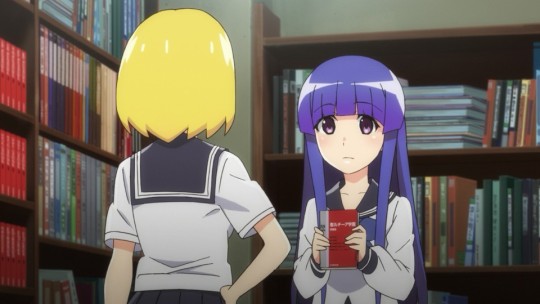
Rika and Satoko studied their butts off for years and their hard work paid off as both were admitted into St. Lucia. Now Rika was able to prevail and fit in with everyone. Satoko on the other hand couldn’t do the same as her grades took a dip, her manners are atrocious, and she doesn’t seem to fit in with anyone. And this caused a drift between Rika and Satoko! And so during a trip to Hinamizawa, Satoko went to the old shrine where she ended up getting sent to that limbo place Rika and Hanyuu were at many times before. There, she meets Eua (God, I hope that really isn’t her name). She’s much like Hanyuu except a lot more condescending. Oh, and she’s that mysterious shadow during the opening theme. She bestows the power to Satoko of reviving on death and returning to a certain point in time. In the hopes that Satoko is able to stop Rika from going to St. Lucia! But Rika is not going to budge. She wants out of Hinamizawa no matter what. And Satoko just wants to be with her friend no matter what. Satoko is even shown Rika’s past and still no dent in…Okay, this is bugging the fuck outta me. Pause the Ending portion!

MY GRIPES WITH SATOKO: Satoko, girl, the fuck is wrong with you?! I know Rika is like your main chick and everything, but for fuck’s sake loosen the grip you have with Rika. This season has changed you and not for the better. You made a connection with ALL OF YOUR FRIENDS from Hinamizawa. Big connections! At least in the original series you did. Look at your moments with Keiichi and Shion. Are you just going to shove them off? And what really sets me off is that Satoko literally had the opportunity to learn about Rika’s hundred year’s loop of death. And feels nothing about it! Only that it’s a challenge to break her herself! God damn, at the end of season one, Keiichi learned the truth and he was remorseful. This bitch doesn’t care that her friends were murdered in such a way. And Rika’s been shot in the head, had a live dissection performed on her, and other forms of torture…AND IT DOESN’T FAZE SATOKO!
I know in my original Higurashi review, I felt sorry for Satoko as she did seem to get the short-end of the stick living in Hinamizawa. I mean, her parents died right in front of her, she suffered abuse from her uncle, abuse from her aunt, ostrisized by the town for years, and a myriad of all types of shit to befall her. But Higurashi Gou has ruined this character. Rika didn’t really do anything wrong to Satoko. She didn’t snitch on her when Satoko got in trouble. She offered help to Satoko when she thought her grades were slipping. Satoko just held onto this petty vendetta. Satoko acted like Rika sexually assaulted her and have two other people gang rape her while drugging her. Okay, that’s a call for revenge, not your petty shit.

YOU SEE WHERE I’M AT WITH YOU SATOKO?! Your actions are so bad that you have me siding with the protagonist from Redo of Healer.
REDO.
OF.
HEALER!!!
I’m done with you! Girl, bye! We now return you to my talk about the ending already in progress.

BACK TO THE ENDING: Sorry, had to get that off my chest. Yeah, Satoko is leaving a bad impression on many of us who have been following the Higurashi story for years. And it just gets worse as she uses her new power for petty shit and abusing it at that. I mean, we saw Rika use her power in order to find a way to live past June 1983. Satoko is just using that shit to win some games and have things go her way. What else could this series bless us with? How about an epiphany from Teppei Hojo?
What?!
Teppei changes for the better.
What?!
Look, I admit that these moments with Teppei and Satoko were tame compared to the shit she’s pulled in the last several episodes. But this is Teppei Hojo! The same guy that used Satoko as his personal punching bag! The same guy who fleeced Rena’s father! The same guy many of us who cheer every time we see him on a moped because we know someone’s going to bash his head in with a baseball bat. Even my best friend knows how I am with this guy. When she gave me Higurashi free swag, I took everything except for Teppei. I don’t take trash. So seeing him so remorseful makes me…conflicted.
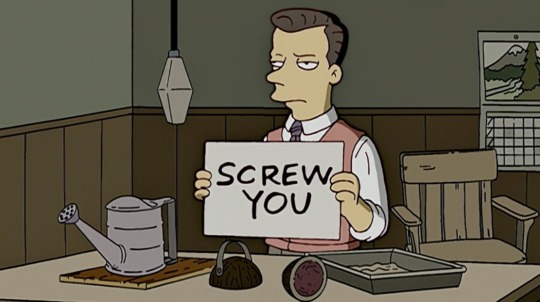
So now Satoko’s got things turned around for her. Her uncle has…changed?! Add to that, her God-like power. Satoko decides to change the past for her own advantage. This includes changing one of the biggest stories in Higurashi Kai with the kids vs. Miyo Takano. If Rika doesn’t experience the pain in those timelines, she won’t think about leaving Hinamizawa. And if she doesn’t leave Hinamizawa, she’ll stay with Satoko forever.
Oh what a tangled web of crazy Higurashi Gou was! I gotta tell you, Higurashi got me excited all the way up until we learn it was Satoko. And then it went straight to Hell. They turned Satoko into a straight-up selfish monster. Totally unlike the Satoko we’ve all grown to love in the original series. Yes, Satoko had those moments where, yeah, you would want to throw a chair at her and beat her ass with it. But that was only temporary! You would always see the good in Satoko despite that mischievous laugh and those episodes in Higurashi Rei. And God help me, I was a shipper of Rika x Satoko 10 years ago. Not a big one, but a supporter of it. Now, I would rather support Amourshipping from Pokemon than root for this. And I despise the living fuck out of Amourshipping. That should tell you something!

If original Satoko were bestowed the powers from Eua, I think things would be different. Satoko would probably use her powers to prevent all the bad stuff from happening to her friends and to her brother Satoshi. I mean, my goodness, not once did I see her think, hey maybe I should find a way to help my ailing brother. Change a few timelines, make him all better! And of course, feel sympathy for Rika’s plight. Do it for Rika’s sake, not your own selfish desires! Rika has died horrificly for hundreds of years. And I seriously just can’t get over Satoko’s reaction to that when she learned the truth. Instead, she wants to treat Rika like a caged bird. Best friend my ass!
Now can Higurashi SOTSU fix the hot mess of Satoko? Time will only tell! And good on them for having Higurashi air in the summertime. Summertime is for Higurashi! Autum is for Umineko. Speaking of, it’s been since 2009. Any chance you want to give Umineko the old reboot or sequel it sorely needs? Oh forget it! My likeness for this season is conflicted. I was annoyed by it, but I didn’t fully hate it. It’s just that last arc with Satoko really burned my beans. And I’m sure a lot of you all feel the same way.
Guys, if you want to watch Higurashi Gou, do yourselves a favor and watch the original series first. Let that swirl around your heads for a while. I know the creator tricked us at the beginning of this series thinking it was going to be an honest-to-God retelling. It is not! It is a sequel. And a sequel that isn’t based off a game or manga of all things. So fans are jumping into this with eyes closed! And if you’re a fan of Satoko Hojo, I’m sorry. I’m just sorry.
If you want to check out Higurashi Gou, it is available to watch on FUNimation and Hulu. But please, if you haven’t watched the original series, go to HI-DIVE now and watch “When They Cry” and “When They Cry Kai”. I think you can manage without watching any of the OVA’s.
I’d rather watch that Kira OVA where the fanservice is thin, you can practically lick off the whipped cream from the Sonozaki’s tit.
That should tell you something if I’m starting to say something nice about Higurashi Kira.
See you in a few months when Higurashi SOTSU comes out.
#anime review#Higurashi no Naku Koro ni#higurashi no naku koro ni gou#When they cry#when they cry gou#Rika Furude#satoko hojo#mion sonozaki#keiichi maebara#hanyuu#rena ryuugu#miyo takano#eua#teppei hojo
13 notes
·
View notes
Photo

La playlist de l'émission de ce jeudi matin sur Radio Campus Bruxelles entre 6h30 et 9h: Mendelson "Algérie" (Le dernier album/Ici d'ailleurs/sortie officielle: 15 octobre 2021) Houari Benchenet "Taachki Felghir" (Le Monde du Raï/Buda Musique/1988) Marika Papagika "Zmirneikos Balos" (I Don't Feel At Home in This World Anymore/Mississippi Records/1931-2007) Stephanie Hladowski "Willy O'Winsbury" (The High High Nest/Singing Knives/2008) Richard Youngs & Simon Joyner "Story of Jhon" (Summer Through My Mind/Ba Da Bing!/2013) Alvarius B. "Funny Thing Is..." (Baroque Primitiva/Abduction/2011) Brigitte Fontaine & Areski "Moi aussi" (7"/Saravah/1972) Caetano Veloso "Lua, lua, lua, lua" (Jóia/Philips/1975) Melvin Van Peebles "Lilly Done the Zampoughi Everytime I Pulled Her Coattail" (Brer Soul/A&M Records/1969) Abner Jay "I'm So Depressed" (True Story of Abner Jay/Mississippi Records/1969-2009) Jacques Dudon "L'Ange, le diable et les colimaçons" (Erosion distillée/Monster Melodies Records/1969-2016) Sarah Davachi "Abeyant" (Antiphonals/Late Music/2021) Céline Lory, "L'amour vin" (En corps y-bride/Autoproduction/2019) Les brochettes "La Plymouth" (Sous mes bandages, des cicatrices/Brute Production/1993) Cabaret Voltaire "This is Entertainment" (The Voice of America/Rough Trade Records/1980) Sonic Youth "Tunic (Song for Karen)" (Goo/Geffen Records/1990) Cat Power "Cross Bones Style" (Moon Pix/Matador Records/1998) Geneviève Castrée "Chanson pour le tigre" (Pamplemoussi/L’Oie de Cravan/2004) Super Mama Djombo "Dissan na M'bera" (Golden Afrique/Network Medien/1980-2005) Ignatz & De Stervende Honden "Height of Noon" (Saturday's Den/Ultra Eczema/2021) Jim O'rourke "Something Big" (Eureka/Drag City Records/1999) https://www.instagram.com/p/CUKRL13gfmY/?utm_medium=tumblr
4 notes
·
View notes
Photo

CRIME WIVES CRIME WIVES CRIME WIVES!!! Two of my 2009-2010 Sonic OCs!!!
Blackberry Blaze the Hare and Cheshirée the Hedgehog!
Inspired by the song Telephone by Lady Gaga and Beyonce, they are wonderful bad bitches who thrive on chaos and the misery of others. Blackberry is more grounded while Cheshiree is more Mad Mickey, but you know. They are super in love and love to ruin everybody’s day!
Hadn’t drawn either of these two in YEAAAAAAAARS so I’m happy to be able to revisit them. Cheshiree is basically like Jinx from League, except I made her in 2009.
[ okay to reblog, don’t delete caption, don’t crop for icons, don’t repost! ]
#YEAH CHESHIREE IS EDGY KEEP SCROLLING#hebby arts#blackberry blaze the hare#cheshiree the hedgehog#sonic ocs#sonic fanart#my ocs#original the character#BOY THE WAY YOU BLOWIN UP MY PHONE WONT MAKE ME LEAVE NO FASTER#PUT MY COAT ON FASTER#LEAVE MY GIRLS NO FASTER
31 notes
·
View notes
Photo

Atlas Sound. Logos, 2009. Kranky (USA) / 4AD (UK). ( Lyrics & Music – Bradford Cox ) ~ [ Album Review | 1) Pitchfork + 2) Pop Matters + 3) Drowned In Sound + 4) NME + 5) Prefix Magazine ]
1) As we've gotten to know Bradford Cox over the last couple of years through shows, interviews, and blog posts, one of the Deerhunter frontman's most appealing qualities is his deep and nuanced appreciation of the music of others. Some musicians listen to records to see how they work, check out the competition, or trawl for ideas; by all available evidence, Cox feels records, deeply. If he was born without musical gifts and couldn't sing or play an instrument, one can imagine him working at a record store, amassing an enviable collection while driving people on a message board crazy with the sureness of his detailed opinions. Whatever you think of his exploits as an indie rock media figure, Cox's music fandom is easy to identify with and also offers a portal into his own work.
Atlas Sound, Cox's solo alias, in one sense serves as a sort of laboratory for figuring out what makes some his favorite music tick, away from the expectations of his main band. Two collaborations on Logos, the second Atlas Sound full-length, are excellent examples of how music listening can be absorbed into original work. First is "Walkabout", a track Cox wrote and recorded with Noah Lennox from Animal Collective, whom Cox got to know during a European tour. Though Cox's music shades dark and Lennox's is often flecked with uncertainty and doubt, "Walkabout" is the sunniest pop tune of either of their careers. Coasting on a buoyant, twinkling keyboard sample, it is a starkly catchy and irresistible, a clattery post-millennial Archies tune that straddles perfectly the border between simple and simplistic. Interestingly, it also sounds very much like a Panda Bear tune.
Then there is Lætitia Sadier of Stereolab, who wrote the lyrics and sings lead on Logos' "Quick Canal". The song opens with some gorgeously textured organ chords and soon a steady-state beat and drums rise up in the mix, setting the kind of relaxed-but-propulsive neo-krautrock scene that Stereolab perfected very early on. Here Cox gets to play the part of the late Mary Hansen, adding "la-di-da" trills behind Sadier as she intones phrases in her unfailingly lovely, for-the-ages voice. He even throws in a "Jenny Ondioline"-style rupture about halfway through, sending the track into a breathtaking shoegaze section for its final four minutes, wherein it floats magisterially on a pillow of shifting guitar feedback. "Quick Canal" is almost nine minutes long and it doesn't waste a second.
On these tracks, the confidence Cox shows in melting his aesthetic into the soundworld of other musicians is striking-- both are unqualified successes, very different from each other but among the best things Cox has ever done. But they also sound a lot like the music his collaborators are known for. Cox's sympathetic support and sense of how to construct songs with others suggests a desire to expand the parameters of what Atlas Sound can be. And given his willingness to let others take the microphone on an Atlas Sound project on these cuts, I can't help but go back to Cox's words on Logos before the album was released, which suggested that this was to be less introverted and that was "not about me."
And then I remember that the cover of the album consists of a photo of Cox with his shirt off and the lyrics in the first two songs start with the word "I", which suggests that we probably shouldn't take these statements very seriously. While the songs may or may not be "about" Cox in the strictest sense, the overall vibe is at least as introverted as 2008's Let the Blind Lead Those Who Can See But Cannot Feel, and every note bears the same signature. With its strummed guitars, hushed double-tracked vocals, and tunes more reliant on ambiance and feel than melody or rhythm, Logos feels every bit as diaristic and personal, but with Cox, that's a plus. At this point, we're not looking to this guy for commentary on the outside world; we want to hear him wrestle with private demons in the sanctuary of his bedroom, bathing every sound in reverb to give the illusion of space and as a sonic balm against loneliness and figuring out how to make music as affecting as the stuff he loves to listen to.
So tracks like "The Light That Failed", "An Orchid", and "My Halo" (the latter two, though different in tone, are further entries in Cox's growing line of melancholy waltz-time shuffles) function primarily as the kind of eerie, blown-out mood music he has become very good at. They are amorphous sketches that still manage to convey feeling, capturing the sort of sad, exhausted, and fragile emotional state that is Cox's area of expertise. "Shelia", a taut pop song with a great chorus hook, is a change-up, though the repeating refrain "No one wants to die alone" fits with the rest of the record's themes. And "Washington School", with its dissonant chime of metallic percussion that sound like gamelan or evilly out-of-tune steel drums, contains the record's most interesting production, with thick drones reminiscent of Tim Hecker and menacing rhythm track.
So some things are different, some are the same, but all of it works well together. It's true that every time Cox ventures out of his comfort zone on Logos, you wish that he'd go even further and embrace extremes-- of tunefulness, tradition, noise-- that don't necessarily come to him naturally. He may yet take a big leap with Atlas Sound, but here the steps away, though rewarding, are tentative. For the rest of the record, Logos feels familiar and assuring, another affecting dispatch from a corner of indie music that is increasingly starting to seem like one Cox pretty much owns.
2) Take a quick gander at Deerhunter's discography and you'll notice a clear stylistic trajectory. From the confrontational noise of "Turn It Up Faggot" to the ambient preoccupations of Cryptograms to the straight-up indie-pop of Microcastle/Weird Era Cont., it's plain to see that as the band has evolved over time, its songwriting has increasingly tended toward the more accessible end of the spectrum. Unsurprisingly, it appears that Bradford Cox's other songwriting vehicle, Atlas Sound, is following a similar arc. On Logos, his second album under the Atlas Sound moniker, Cox provides us with 11 songs that are far less insular, though no less dreamy, than those he has penned in the past. While his fractured compositions still evoke the myth of the bedroom pop auteur, the songs on Logos sound considerably more refined than the lo-fi sketches being churned out by many of his peers. This, as it turns out, is a very good thing.
To wit: "Walkabout", the track that had the blogosphere buzzing with anticipation for the better part of the summer. Built around a squelchy organ sample lifted from the Dovers "What Am I Going to Do", the song simultaneously recalls both the acid-tinged psychedelia of Black Moth Super Rainbow and the technicolor pop of Brian Wilson. Of course, it's impossible to mention "Walkabout" without acknowledging its co-creator, Noah Lennox, a.k.a. Panda Bear. In many ways, "Walkabout" bears Lennox's fingerprints more than it does Cox's, with Lennox's wistful vocal harmonies echoing throughout the track's four-minute runtime. It's easy to see why Cox chose to leak "Walkabout" well in advance of the release of Logos; bright, bubbly and infinitely catchy, the song perfectly captures the mood of a fleeting summer afternoon and stands as one of the year's best singles.
"Walkabout" is obviously a standout, though it's also an outlier when approached within the context of Logos. While some may feel as if they've been misled, the good news is that the rest of the album is no less rewarding, if not quite as instantly gratifying. Take, for example, the opening suite that leads up to "Walkabout". Pitting disjointed acoustic guitar strums and distant, reverb-soaked vocals against a backdrop of aqueous noise, "The Light That Failed" succeeds at drawing the listener in while still keeping her at arm's length. "An Orchid", meanwhile, presents the listener with a dreamy ballad that feels like an indistinct outline for a Deerhunter song. Cox's vocals and the song's guitar hook are buried just deep enough in the mix to force the listener to dig a little. When "Walkabout" finally hits, it feels like a reward well earned.
Luckily, "Walkabout" isn't the only nugget of pure pop bliss to be found on Logos. "Shelia", a disarmingly straightforward slice of jangly college-rock, proves hard to shake, with its Pixies-esque melody and sun-bleached three-part harmonies. Lyrically, the song serves as a world-weary rejoinder to the sweetly nostalgic refrain of "Walkabout" ("What did you want to be / When you grew up"), with Cox explaining, "No one wants / To die alone", before promising the song's titular subject, "We'll die alone / Together." It sure goes down easy, though.
Cox has publicly acknowledged that Stereolab were his favorite band in high school, so it should come as no surprise that given the opportunity to collaborate with Lætitia Sadier, he puts his best foot forward. On "Quick Canal", he lovingly builds up and tears down a cathedral of sound for Sadier to inhabit, layering a deep bass groove, tambourine hits and a wall of gently panning organs atop a steady, shuffling beat. Midway through, the song falls apart, briefly taking a detour into glitchy noise before giving way to a squall of fuzzed-out guitars. Try as Cox might to obfuscate the vocals, however, Sadier's voice proves indefatigable. To her credit, she sounds right at home here, bouncing her voice off of the song's jagged edges to produce a track that's equal parts haunting and triumphant.
With regard to electronic composition, on Logos Cox sounds more confident than ever before. Samples and electronic instrumentation form the underpinnings of many of the album's songs, though not to conspicuous effect. Penultimate track "Washington School" illustrates this point better than perhaps any other on the album. Opening with a loop built from fragments of a minor key piano line, the song soon piles on a pounding, bass-heavy beat, chimes and a playful synth line, blossoming into a full-on folktronica number that recalls Four Tet circa Rounds. Somewhere in the distance, Cox's disembodied voice rings out: "Shine a light / On me."
If Let the Blind Lead Those Who Can See But Cannot Feel was the product of Cox's willful isolation, then Logos is the sound of the auteur stepping outside of his bedroom to engage the world outside. Though it cedes little of the hazy delivery that made Let the Blind… so compelling, Logos brims with a wide-eyed energy all its own, conveying a palpable sense of optimism that's all too rare in Cox's oeuvre. This isn't too surprising when one considers the circumstances; the path that led Cox to the album's creation -- globetrotting tours with his idols, collaborations with some of the most distinctive voices in indie rock -- is the stuff of dreams for hermetic music nerds. Perhaps that's why Logos sounds as vibrant as it does: it's the result of Bradford Cox living out his dreams rather than just dreaming them.
3) One of many unsatisfactory things about end-of-decade retrospectives is that musicians are rarely so accommodating as to plot their careers in nice, convenient ten year cycles. Nonetheless, that’s how posterity tends to remember them, regardless of finer details. Thus the Kinks are Sixties artists, the Clash a Seventies act, Talk Talk an Eighties band, Nirvana from the Nineties, and you’d comfortably stick a punt on The Strokes and Sufjan Stevens ending up defined by this decade we’re exiting.
But what of Bradford Cox? Even if you were aware of Deerhunter's raucous 2005 debut ”Turn It Up Faggot” at the time, you're a wizard or a liar if you foresaw how their frontman was going to fill the years 2007 to 2009. That is to say: three Deerhunter albums (‘tis a fool indeed who views Weird Era Cont. as anything other than a record in its own right), two EPs, and a solo project as Atlas Sound that’s yielded God-know-how-many free downloads, as well as last year's Let The Blind Lead Those Who Can See But Cannot Feel, and now – an epic 22 months later - Logos. That all of this bar the odd freebie has been good to exemplary is simply astonishing, and points to an artist whose profligacy and cult popularity has him nicely set up to be a defining artist of the next decade.
And yet... anomalous as ”Turn It Up Faggot” may seem, such scabrous origins are indicative of a palette that has been cooling and quietening ever since Cox first intersected with the limelight. The soundbite-friendly ‘ambient punk’ aesthetic never really lasted beyond Cryptograms, with Microcastle canning the abrasiveness in favour of reasonably straightforward shoegaze set off with dreamlike Fifties flourishes. Having arrived at something like a commercial sound, another artist might have stopped there; however, Cox has ploughed right on through, this year’s Rainwater Cassette Exchange far and away Deerhunter’s most introverted work, a retreat into quiescent childhood reverie.
Logos has much more in common with Rainwater... than Let the Blind..., for the most part ditching the dissonant electronics in favour of delayed acoustic guitars and old-time pop structures. On the face of it, it sets out Atlas Sound’s stall as simply being whatever Cox may do sans Deerhunter. Yet in a way the 'ambient solo project' tag still kind of makes sense. Strictly speaking ambient music is defined not by instrumentation, but by its evasion of the consciousness. Whole swathes of Logos are blurred and indistinct - technically melodic, hooky songs treated and delivered in such a way that they all but self-negate, leaving nothing but fleeting impressions: the winsome viola that arrives in ‘Attic Lights’, just as Cox mutters ”maximum pain, maximum effect”; the gay singer’s unsettling yearning for traditional marriage on ‘Sheila’ ("we’ll die alone, together"); the barely discernible mantra ”all is love” that briefly ghosts through ‘Washington School’.
This might sound like a way of romanticising an unmemorable album, but that's far from the case. These songs are bunched together into two dreamy, fog-like passages that serve as a backdrop for a handful of the most tangible tunes Cox has ever written, soaring atmospherically above the misty dreampop. Opener ‘The Light That Failed’ roots itself in the consciousness through eerily torpid glitching, Cox’s disconcerting use of something approaching a falsetto, and the doomy langour of its titular lyric. It sets up an album that frequently drifts into disquieting areas, yet never quite follows through on this early moment of dread. Indeed, delightful Panda Bear hook up ‘Walkabout’ serves as definitive proof that the light hasn't failed at all. While much of Cox’s early pop obsession speaks of a desire to creep out of the now entirely, ‘Walkabout’ is far more tangible and good natured, thanks largely to Panda Bear’s high, comforting tones and the appropriation of the hook from actual vintage Sixties pop gem ‘What Am I Going To Do?’ by The Dovers. Ironically for a song built around a 40-year-old tune, nothing, else on Logos has ‘Walkabout’s immediacy, though the excellent title track comes close, a rattling Strokes-alike number slightly removed from the world by Cox’s arsenal of floaty FX.
As we’ve known ever since last year’s leak of the Logos demos, the centrepiece is the eight and a half minute, wholly electronic ‘Quick Canal’. Though tamed a little from the leaked 13 minute instrumental, this more mannered, Laetitia Sadier-sung incarnation is a better fit here, and still towers above the skyline. The Stereolab singer adds an inescapably Enya-ish quality to the gentle early stages, but by the time the song’s swooshing, snowy motorik has kicked into full gear she fits in immaculately, an aloof Old World passenger on a song charged with haughty European electronica. It perhaps doesn’t sound so jaw-dropping as it did in isolation, but a lot of that can be attributed to an intentional effect of the surroundings. Those short, subliminal songs serving to filter away reality and focus, like half remembered dreams that leaves the senses baffled and feverish.
Logos is a gorgeous, hallucinatory and somewhat sickly outing. While there's every chance he'll wrong foot us, and soon, this record is entirely in keeping with the increasingly self-erasing route Bradford Cox has taken as a musician; it's hard to stifle a shudder at that blanked out cover image. Maybe Cox will go on to be a star next decade - he's a gregarious, prolific man liked by critics. But listen to his music, and that doesn't feel quite right. Maybe he'll become an icon. Or maybe he’ll finally make his escape from our timestream entirely, leaving us to wonder if he was ever there at all.
4) Much like Starbucks, Bradford Cox has become a ubiquitous presence. What with his work with art-rock outfit Deerhunter, his involvement in Karen O’s official soundtrack for Where The Wild Things Are, and now this, his second solo offering under the Atlas Sound banner, you’d be forgiven for thinking that such familiarity will start to breed contempt. But you’d be way off the mark.
There are two things you should know about this unlikely lo-fi hero of gangly deportment (he has Marfan Syndrome, a genetic disorder that stretches his limbs and strains his heart) and a girlish speaking voice (the affliction for this is yet uncertain). Firstly, it is impossible to dislike him (just see Wayne Coyne’s spoof argument with him on YouTube, branding Cox a “dick”). Secondly, his creative output has proved him to be one of – if not the – most forward-thinking and inspiring musicians of our generation.
So, as Cox takes time out from Deerhunter, along comes ‘Logos’. Less of an experimental minefield than its predecessor, ‘Let The Blind Lead Those Who Can See But Cannot Feel’, it sees Cox weave in and out of dream-like sequences, such as the sombre ‘The Light That Failed’ and ‘Quick Canal’, the latter featuring the sweetly masculine vocal of [a]Stereolab[/a]’s Laetitia Sadier; while ‘An Orchid’ pitches in as the aural equivalent of a David Lynch storyboard, guided along with looped noises and whimsical vocals.
It’d be easy to overlook Cox’s lyrics when the soundscapes are this rich and ornate, but there’s a delicate exploration of the most human of sensibilities and yearnings on ‘Logos’. He opens up the emotional vaults on ‘Sheila’, pining softly that “no-one wants to die alone… we’ll die alone together”. Likewise with ‘My Halo’, where Cox reveals “My halo burned a hole in the sky/My halo burned a hole in the ground… so I wait for polarity to change”. There’s much warmth and playfulness to be found here too, the unfeigned honesty and childlish desires expressed on ‘Walkabout’ – featuring the falsetto of [a]Animal Collective[/a]’s Noah Lennox – with its lyric “What did you want to see?/What did you want to be when you grew up?” being a case in point.
Cox may have tagged Atlas Sound as just another side-project, but ‘Logos’ is a clear indication that his solo creative output is just as richly rewarding as what came before.
5) For a project originally started as a way for Deerhunter frontman Bradford Cox to give a voice to his despairing isolation (he records completely alone) as a teenager, Atlas Sound is starting to sound like an arena-filling, widescreen pop project. Logos, Cox’s second proper solo album, takes the dense, gray worlds of Let the Blind Lead Those Who Can See, But Cannot Feel and puts them through a rainbow, delivering a splendid album.
If there’s one word to describe Logos, it’s “watery.” And in that regard, Logos shares a lot in common with Merriweather Post Pavilion (and Deerhunter’s Rainwater Cassette Exchange from earlier this year). Both albums trade in dreamy avant-pop landscapes buoyed by soggy atmospherics. “Criminals” sways like a shipping vessel in choppy seas, while the album’s great closing third (“My Halo” through the title track) sounds like it was transmitted from that underwater base in the third season of Lost. Cox is still reliant on the general ambiance that envelops his solo work, but here he’s willing to let his vocals float above the mix. And while musically this is brighter, he’s still all Debbie Downer. Old standby lyrical tropes of growing old (on “Sheila” Cox sings “we will grow old” like he’s reassuring someone else), loneliness (“Attic Lights”) and lost hope (“The Light that Failed”) show up repeatedly, and he still sounds like he’s on his deathbed when he sings.
But for an album created largely by one guy alone in his room, the guest performances shine the most on Logos. Stereolab’s Lætitia Sadier wrote the lyrics for “Quick Canal,” a sprawling, shoegazey track that never loses its motorik motion, peaking repeatedly in its eight minutes. The bubbly “Walkabout,” the high-profile track with Animal Collective’s Panda Bear lives up to all the hypertext spilled about it this summer, delivering the best of both Panda Bear’s effervescent youthful innocence and Cox’s wistful yearning.
Logos, while just the second solo album from the frontman for a band of marginal fame, represents the latest and greatest chapter in Cox’s ride to indie stardom. He rose to prominence mid-decade as a confrontational trickster riding blog-hype (circa Cryptograms), continuing with a solo album to build his brand (Let the Blind), an indie-rock masterwork (Microcastle) and a solo album of nearly as high repute (Logos). As for what’s next, Cox has remained mum (though Deerhunter might be taking a hiatus), but with Logos, he ensures we’ll all be waiting.
#rock music#art rock#atlas sound#bradford cox#kranky#4ad#2009#2000s#2000s rock#pitchfork#pop matters#drowned in sound#nme#prefix magazine#review
8 notes
·
View notes
Text
[INTERVIEW] Baekhyun, Kai - 190927 Billboard: “Why SuperM Is Being Touted as K-Pop's Avengers”
"With SM Entertainment’s newly formed supergroup, SuperM, the company hopes to reclaim its dominance as the genre continues to push into the U.S. mainstream.
There have been hip-hop collectives and rock supergroups, but SM Entertainment’s SuperM is being touted by the company as a boy band full of leading men -- and K-pop’s most impressive lineup to date, with seven members from SM’s most successful and still-active groups.
“I see this as a new challenge,” says EXO vocalist Baekhyun, who at 27 is the oldest member of SuperM and has emerged as its leader. “There are a lot of expectations, because even though this is new, each of us comes from a different [popular] group. But there’s this awesome synergy between us.”
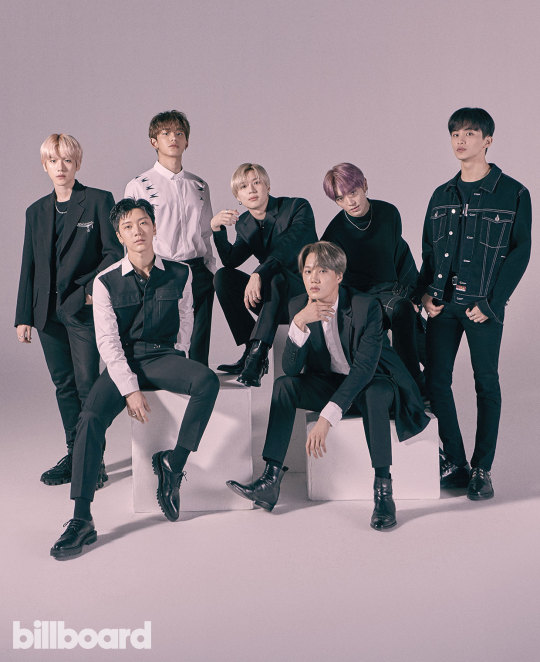
The group -- which will release its self-titled debut EP on Oct. 4 -- also consists of EXO’s Kai, 25, who recently became the global face of Gucci’s new eyewear campaign; WayV’s Lucas, the 20-year-old Hong Kong-born rapper, and Ten, the 23-year-old Thai artist; NCT 127’s Canadian songwriter-rapper Mark, 20, and 24-year-old leader Taeyong; and Taemin, 26, who has been in the industry the longest, joining SHINee at 14. “Our team is the aces of aces,” says Taemin.
EXO has scored four No. 1s on Billboard’s World Albums chart; in January, WayV debuted at No. 4 on Billboard’s Social 50 ranking; NCT 127 performed on Good Morning America in April; and SHINee has won the Seoul Music Awards’ popularity honor twice.
As for SuperM, its name is a nod to its roots at Korean company SM Entertainment, formed in 1995 by producer Lee Soo-man. Since then, SM has expanded K-pop’s reach, first in Asia and then in the United States. Earlier this year, SM partnered with Capitol Music Group to build a bigger following for NCT 127 in the States. And in August, the two companies, along with Capitol’s independent distribution and label services division Caroline, announced they would launch SuperM together.
Capitol CEO Steve Barnett says SuperM will “be part of our legacy to the future,” and calls Lee the “godfather” of K-pop. Lee’s résumé proves as much. In 1996, SM introduced H.O.T., largely considered the first K-pop idol group, and has continued to produce acts with stateside appeal.
Many South Korean entertainment companies have followed suit: Big Hit’s BTS has had three Billboard 200 No. 1 albums; this summer, YG’s Blackpink became the first female K-pop group to perform at Coachella; and Starship Entertainment’s Monsta X collaborated this year with French Montana on a Mainstream Top 40 hit. All three have redefined what U.S. success can look like for Korean pop groups in the second half of this decade. And while SuperM may seem like SM’s latest effort to rival its competitors, it’s equally an attempt to revive one of SM’s key sonic legacies: SMP, or SM Music Performance. The company-created term refers to dance performances set to a fusion of pop-rock, R&B and hip-hop production. SMP was best illustrated by early-2000s releases from record-breaking boy band TVXQ!, which in June 2018 became the best-selling foreign touring act in Japan, and Super Junior, which has had 21 top 20 hits on Billboard’s World Digital Song Sales chart.
SM has had U.S. crossover success before: In 2009, BoA became the first-ever K-pop star to enter the Billboard 200, and in 2012, Girls’ Generation performed on the Late Show With David Letterman. In June, NCT 127 debuted at No. 11 on the Billboard 200 with its We Are Superhuman EP. But SuperM, with its blockbuster lineup, is SM’s effort to lead the K-pop conversation in the U.S. market, as it once did in the early ’00s.
“I don’t want to compare SuperM to any of the other groups at SM, but if I had to describe [what] sets us apart, it’s the performance element,” says Taemin. “It’s not just dance, but includes vocals and rapping, where each member can showcase his ability and shine in a different way, that maybe they can’t in other groups.”
So far, SuperM has been tight-lipped about the sound and style of its album and doesn’t plan to share any tracks ahead of the set other than the already-released instrumental version of “I Can’t Stand the Rain.” One thing it has made clear, though, is its goal: “We’re doing something futuristic and more advanced than what the world has ever seen,” says Mark."
SuperM also arrives at a time when SM shareholders are demanding change. In July, SM rearranged its upper leadership at SM Entertainment Group and subsidiary SM Contents & Culture, and announced it would look to divest less-than-profitable business ventures -- mainly the SMTOWN Coex Artium complex in Seoul, a museum, café, theater and store that opened in 2015. If SuperM becomes a crossover success, the company could solidify its footing.
Despite the fact that SuperM already has debuted on Billboard’s Artist 100 chart without releasing a stitch of music, K-pop fans have expressed trepidation over its assembly. Immediately after Barnett and Lee announced SuperM at August’s Capitol Congress -- Capitol’s annual pep rally and presentation of upcoming releases — the hashtag #SuperMDisbandParty was created, as fans, concerned over how the supergroup would impact the futures of their favorite existing K-pop acts, demanded that SM and Capitol abandon the project.
SuperM isn’t fazed. Its members want to prove how strong they are as a whole -- especially when they’re together onstage. (The group is currently in rehearsals, but announced in a teaser Tuesday that it will be making its first-ever performance in Los Angeles at Capitol Records on Oct. 5 -- one day after the release of its debut EP.) “It’s always important to take the next step when people might not expect it,” says Mark. “We always try to make that challenge into something great for the fans -- and for us, as well.”
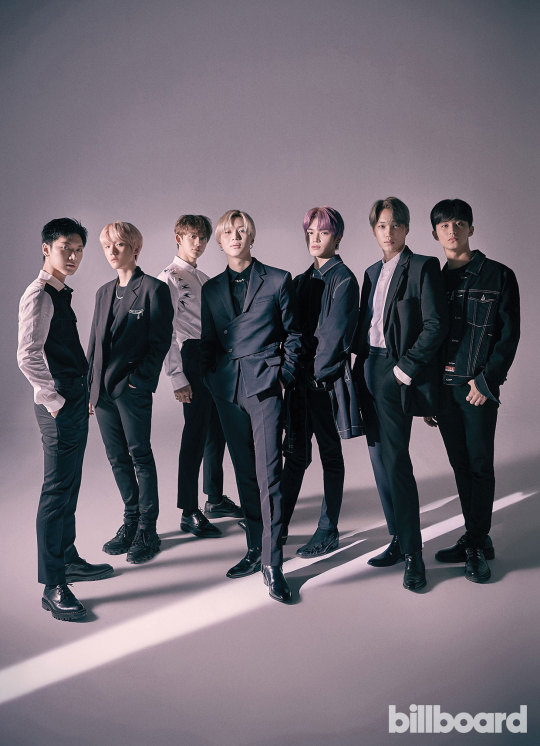
SM Entertainment’s Pre-SuperM Supergroups
S.M. the Ballad: SM vocalists from TRAX, Super Junior (and its sub-unit Super Junior-M), SHINee, TVXQ!, Girls’ Generation and EXO -- and two former SM members, one of whom is now in Cube Entertainment’s boy band Pentagon -- released two EPs under the name S.M. the Ballad. In 2010, one grouping recorded Miss You; in 2014, another recorded Breath, which hit No. 9 on Billboard’s World Albums chart.
Younique: In 2012, South Korean car manufacturer Hyundai Motor Company unveiled its new marketing campaign, “Premium Younique Lifestyle,” and worked with SM to debut a supergroup in promotion. Within two months, Younique -- members of EXO, Girls’ Generation, SHINee, Super Junior and Super Junior-M -- released PYL Younique Volume 1, featuring singer-songwriter BoA and rappers Dok2 and The Quiett.
SM The Performance: The choreography-heavy team has released only two singles since it formed in 2012, and they arrived five years apart. The group debuted with a Korean remix of Zedd’s “Spectrum” (off his 2012 debut album, Clarity) featuring members from TVXQ!, Super Junior, SHINee and EXO. And in 2017, it released “Dream in a Dream,” a solo single from WayV’s Ten that was branded a group track."
Photo links: 1, 2
Credit: Billboard.
#EXO#EXO K#Baekhyun#Kai#190927#exo im#exo k im#baekhyun im#kai im#p:news#t:news#fs:billboard#comeback:Tempo#followup:Shot
87 notes
·
View notes